
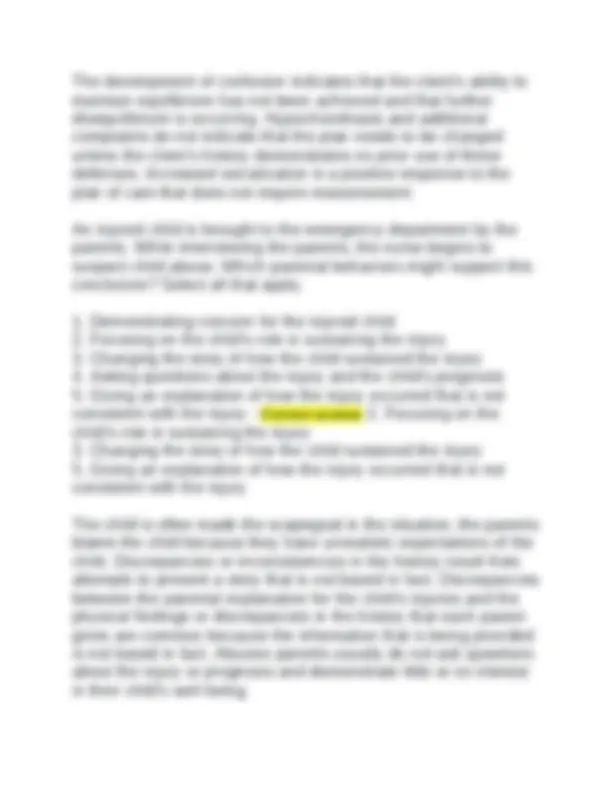
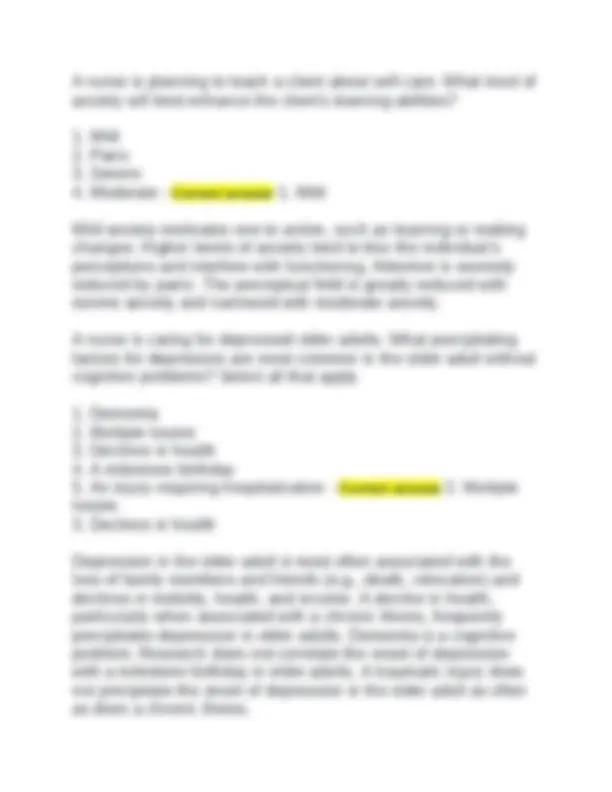
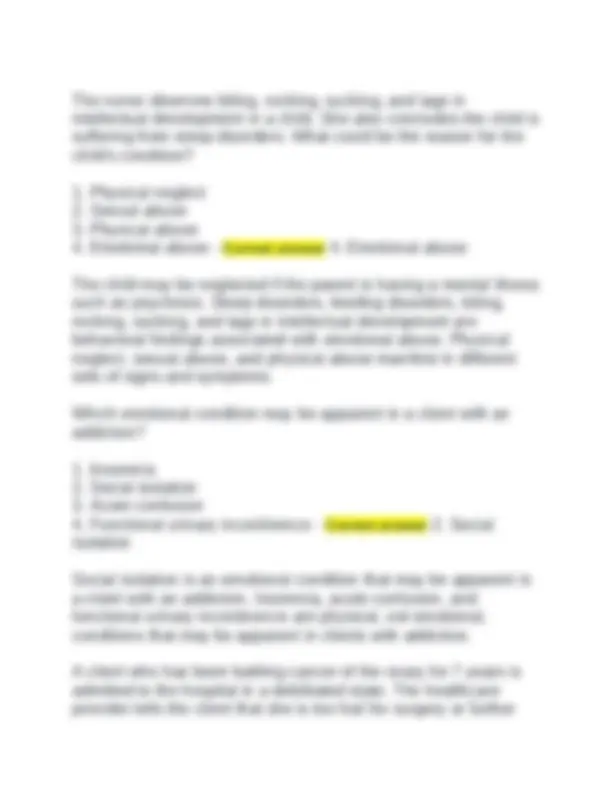
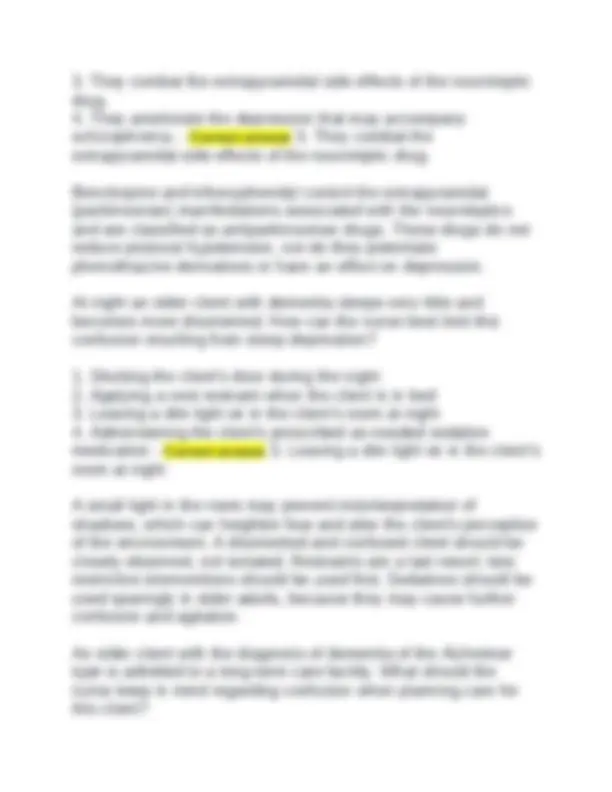
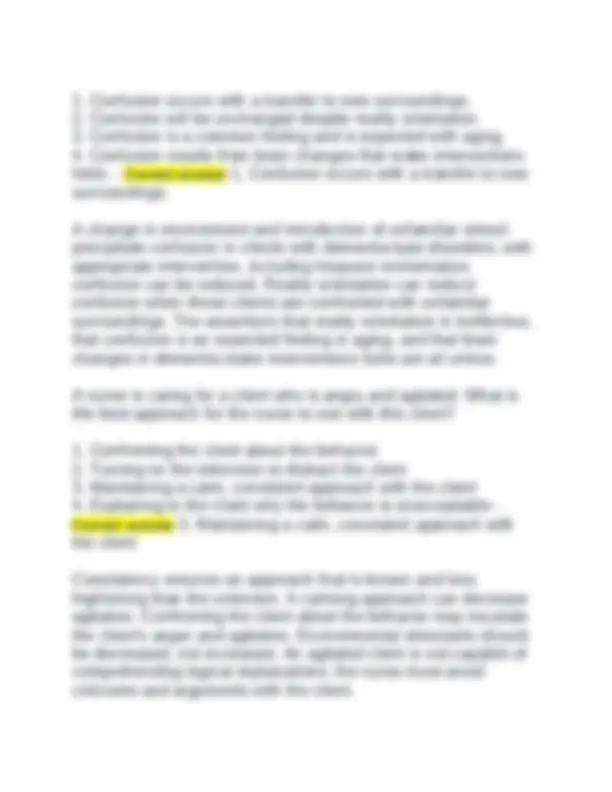
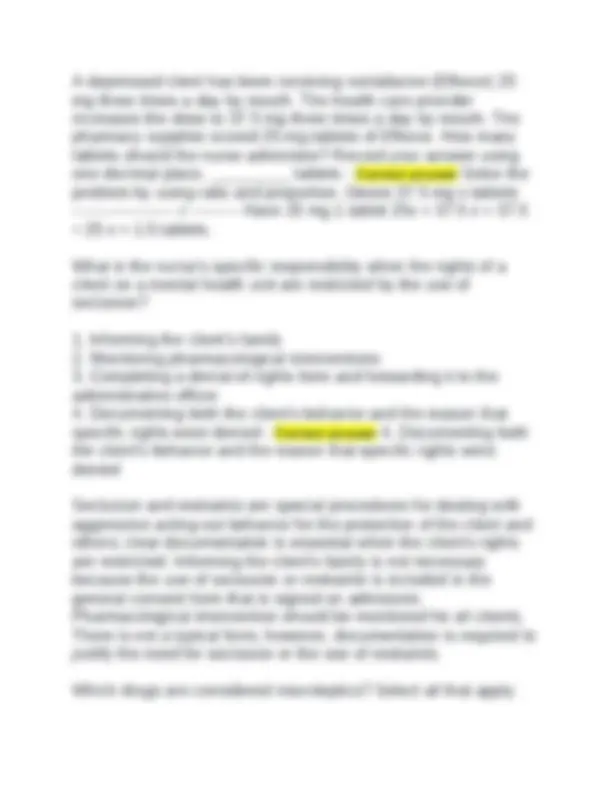
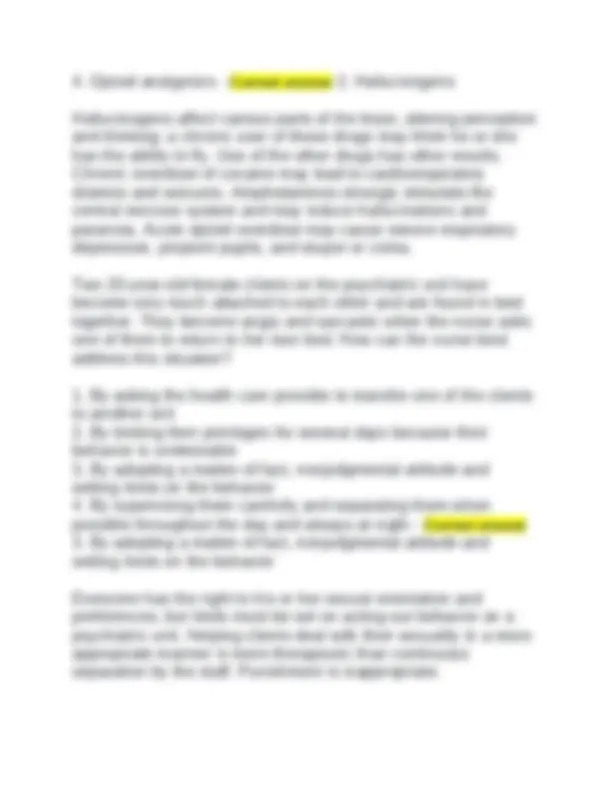
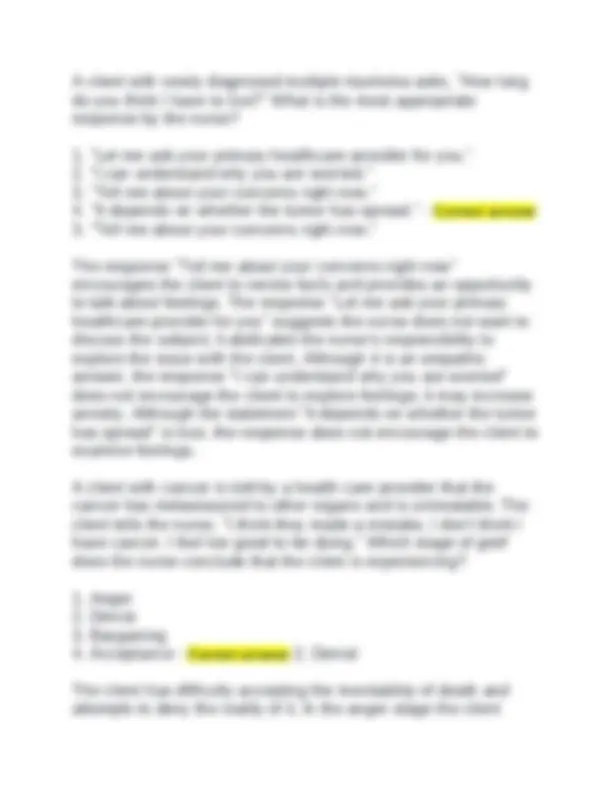
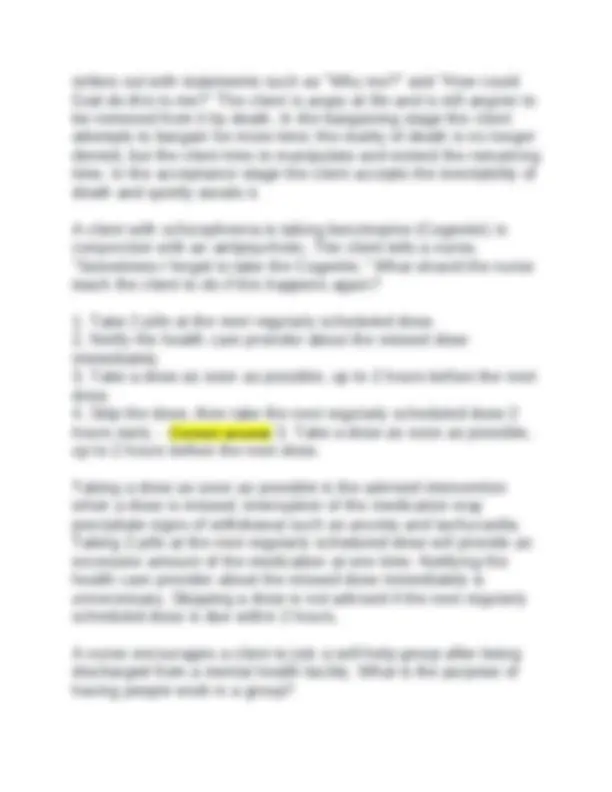
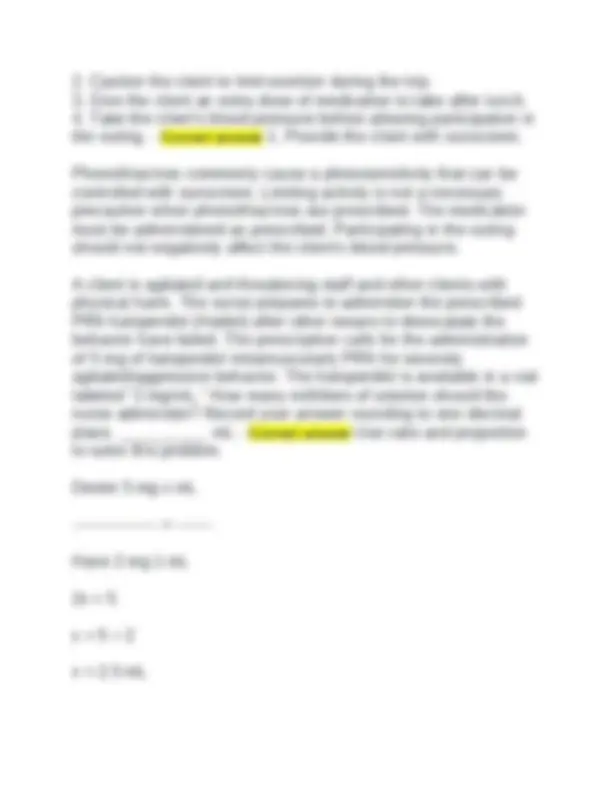
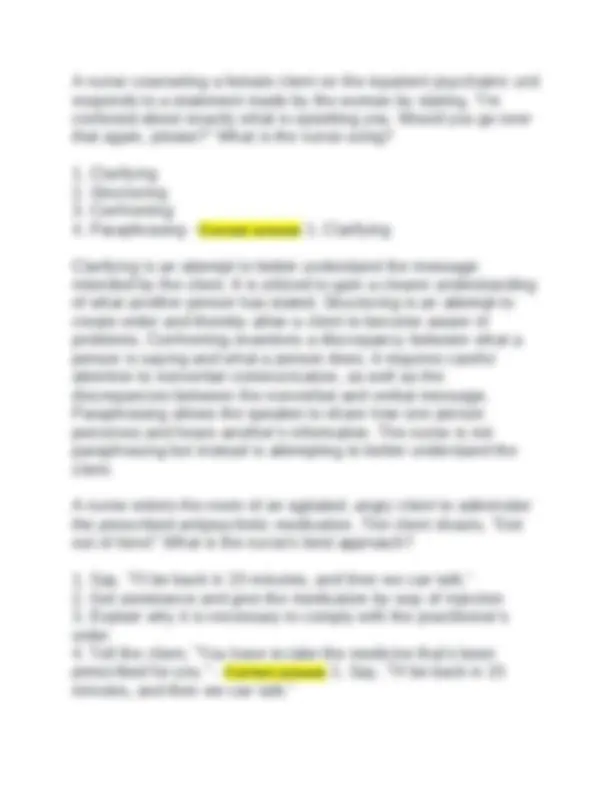
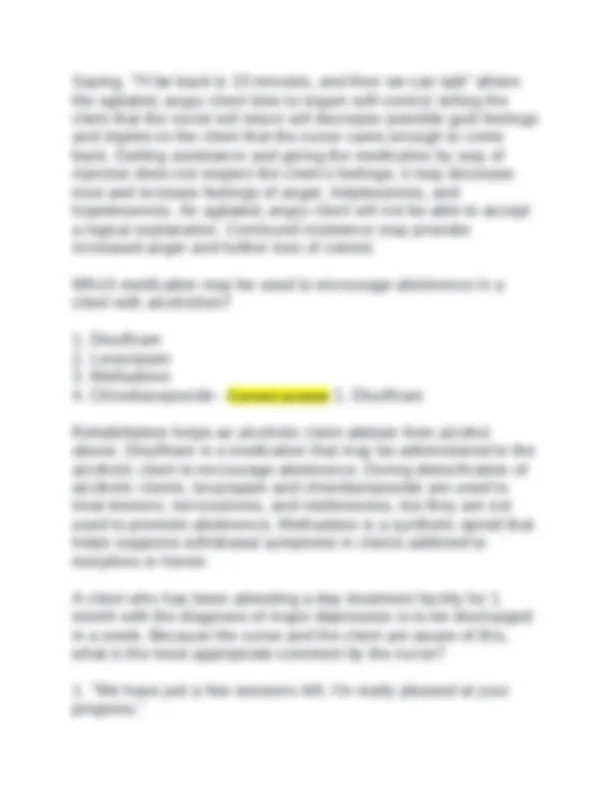
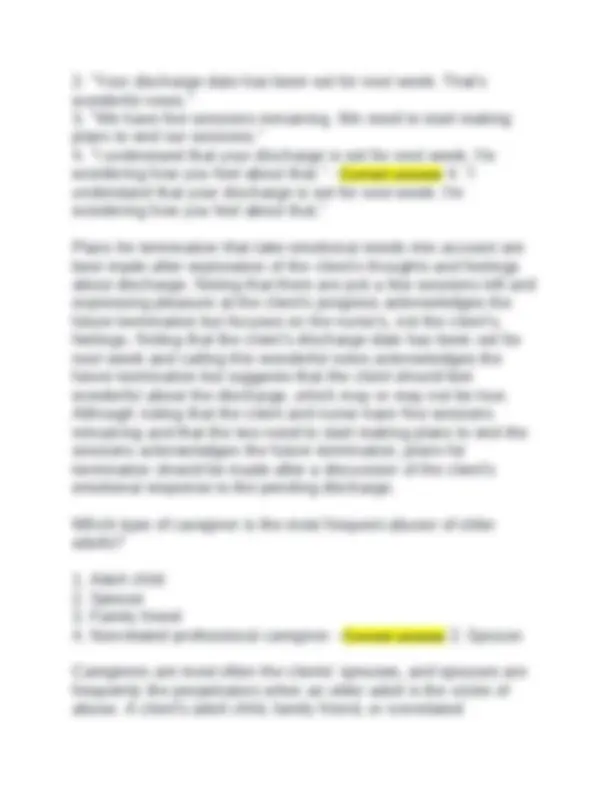
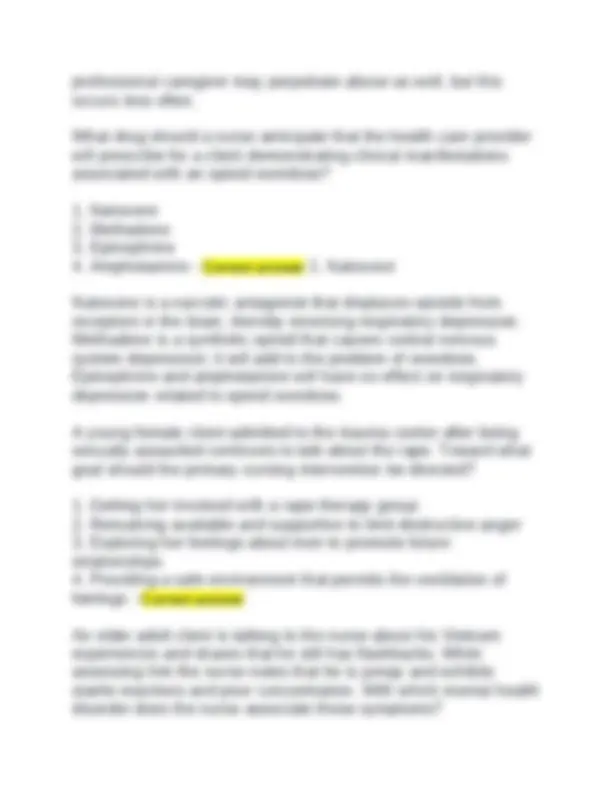
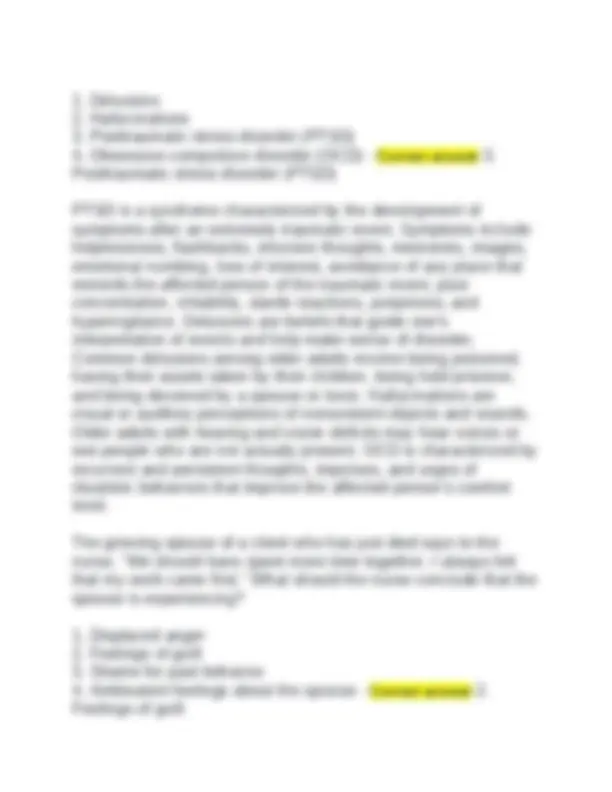
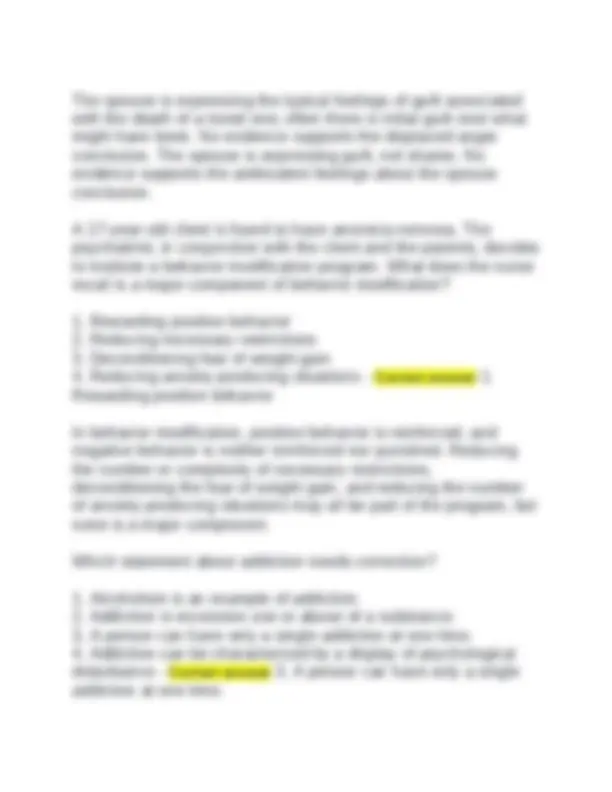
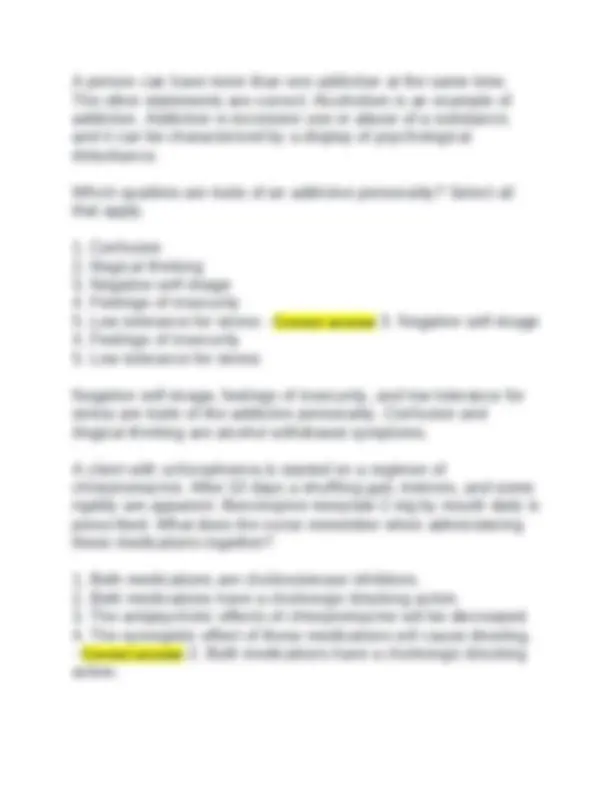
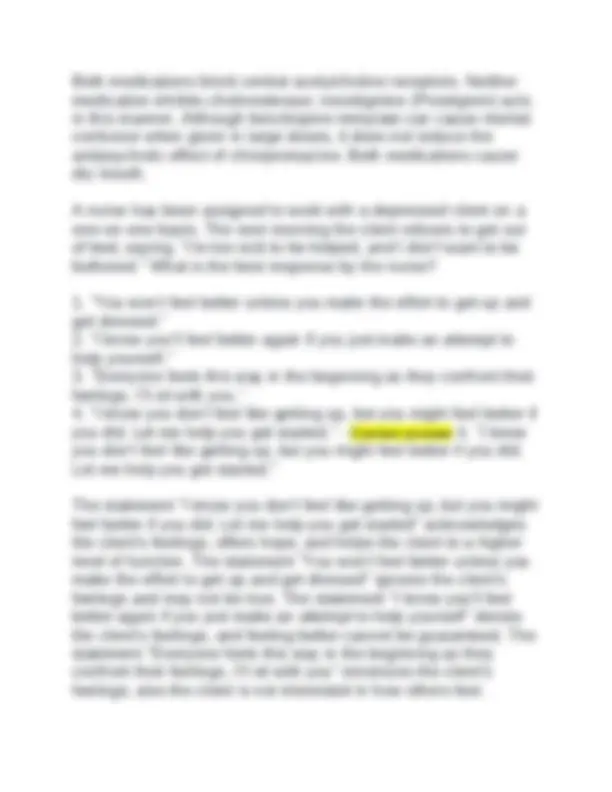
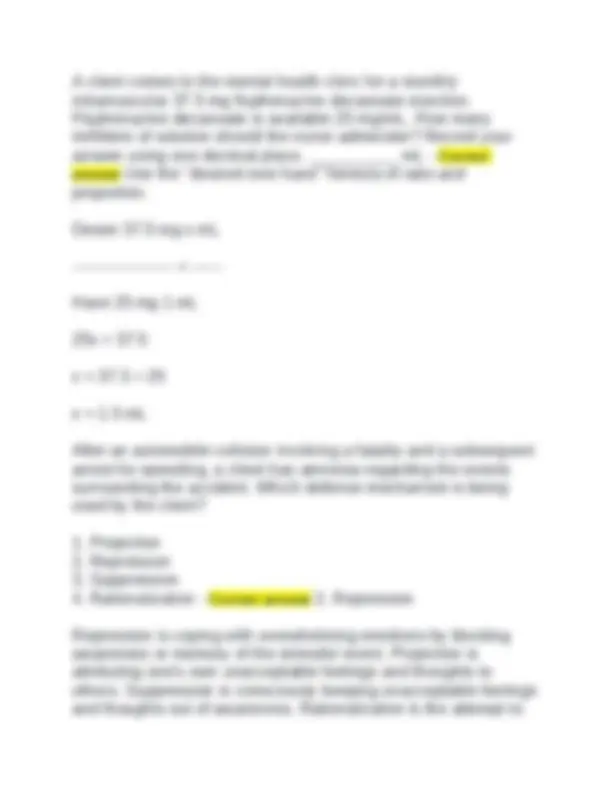
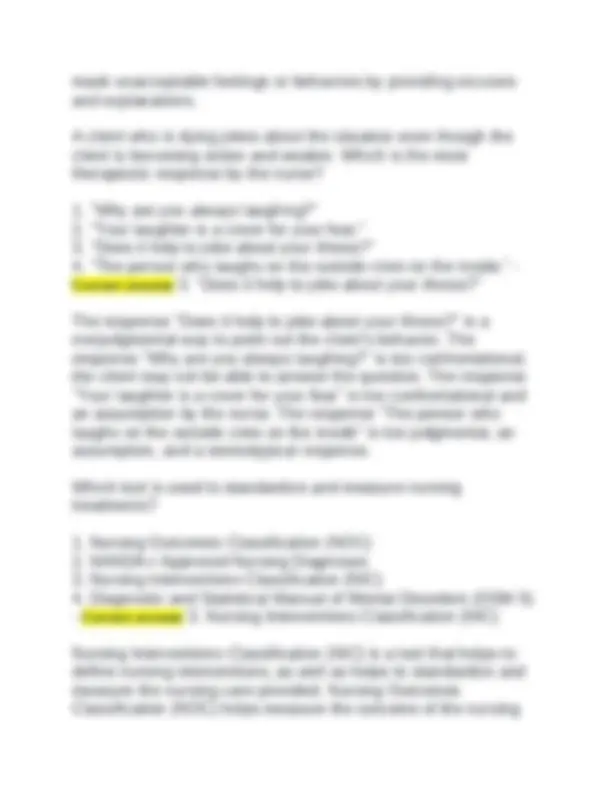
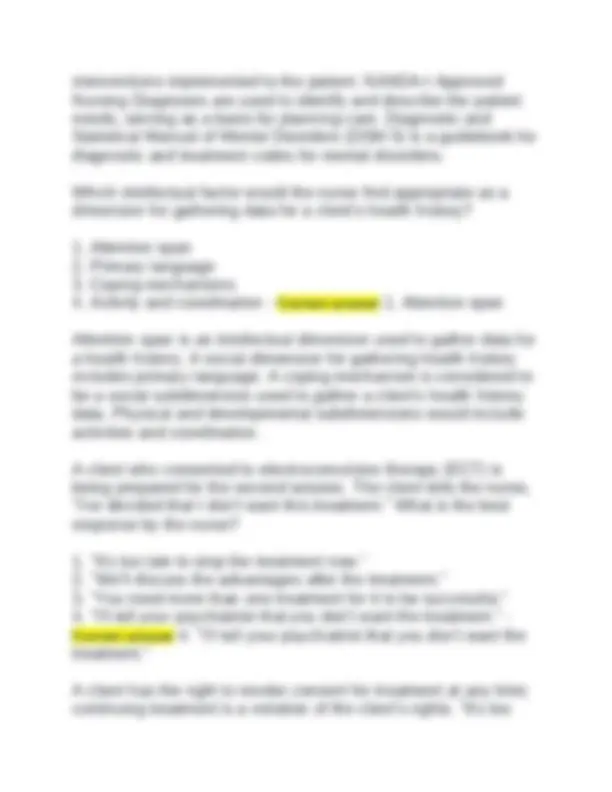
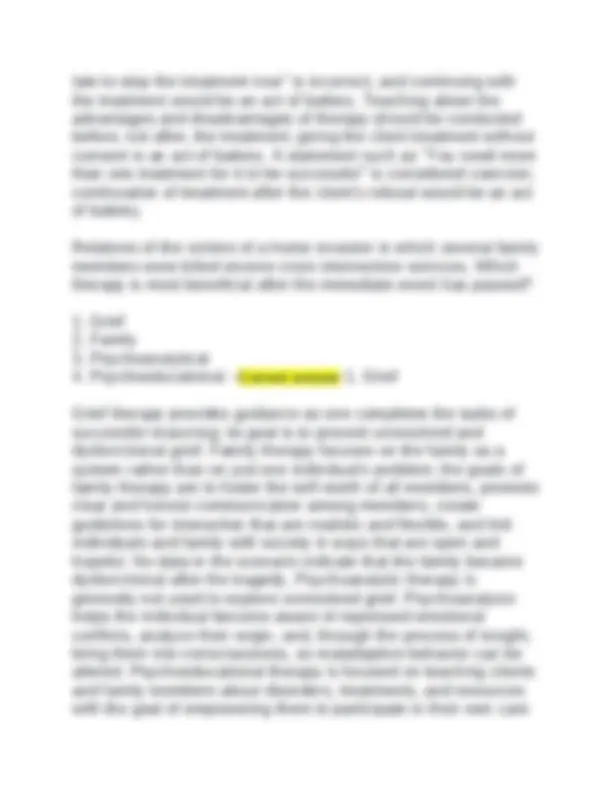
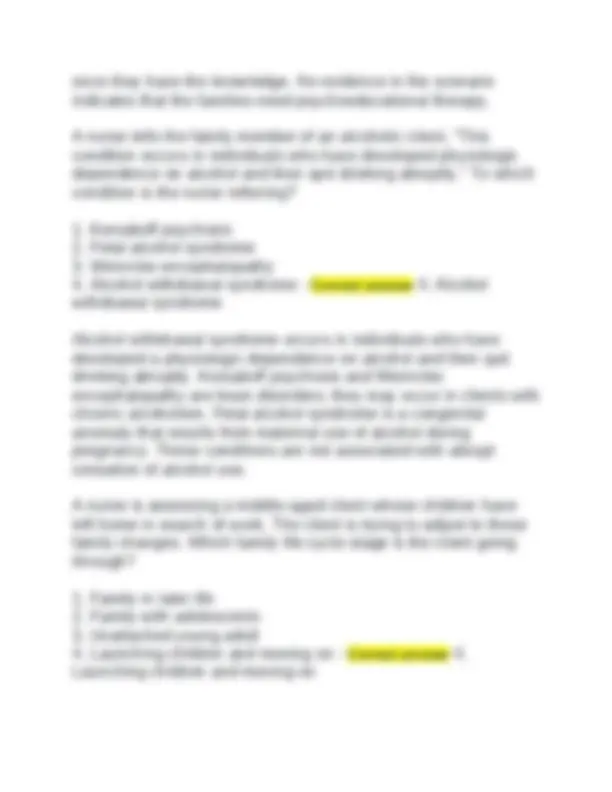
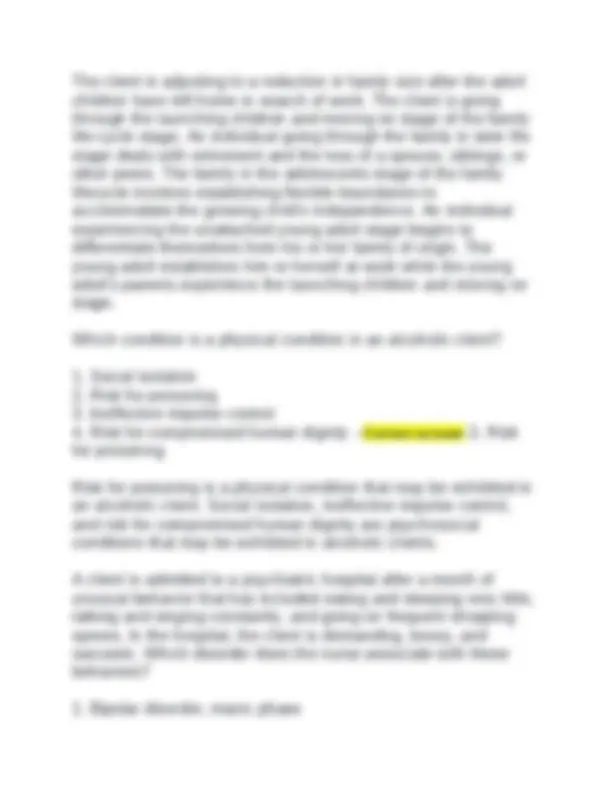
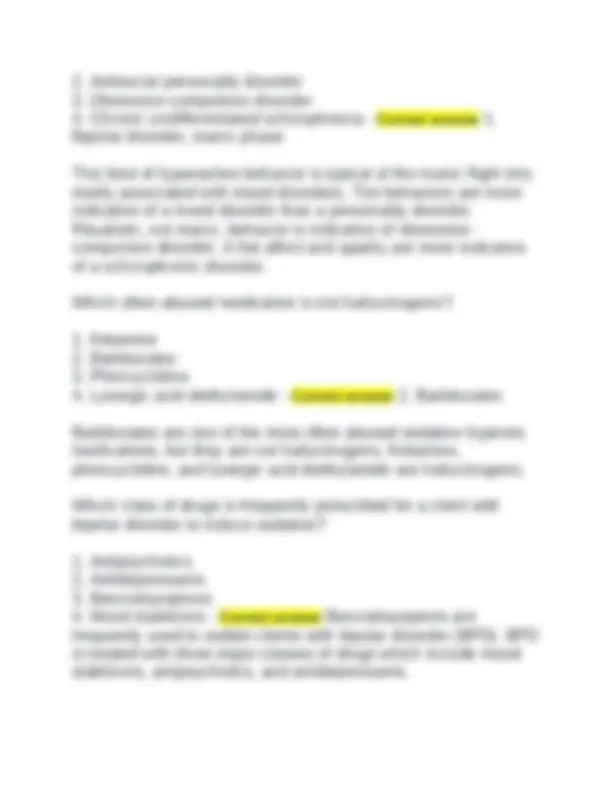
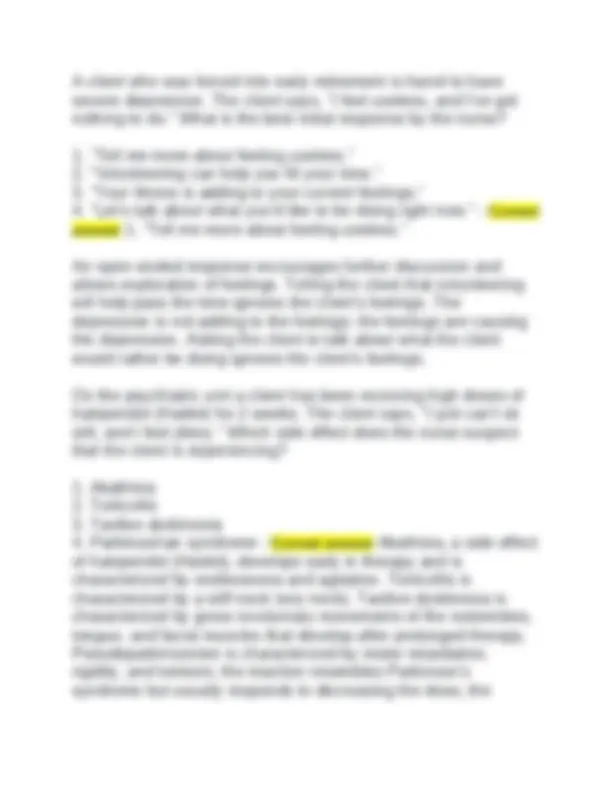
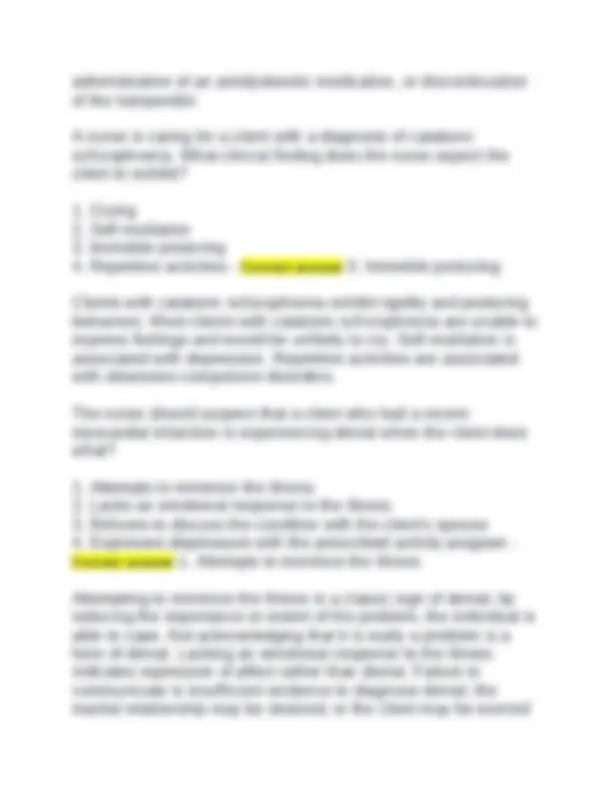
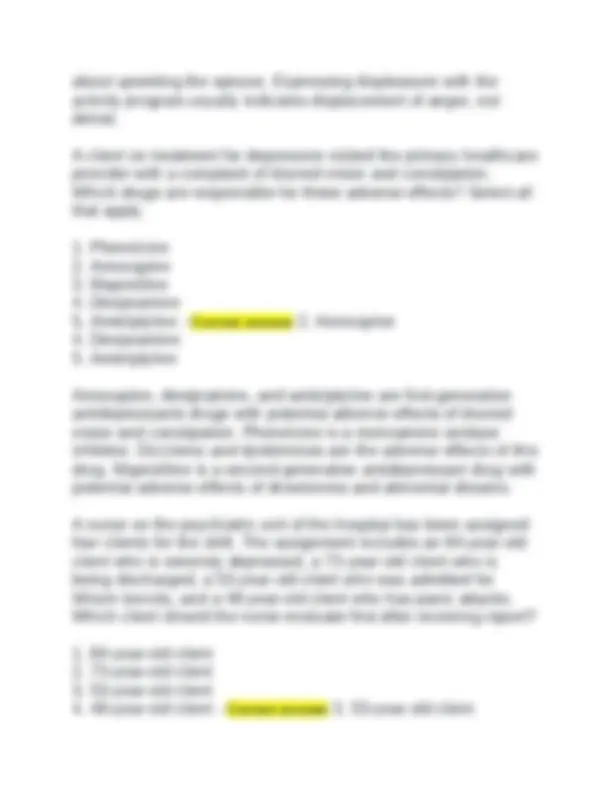
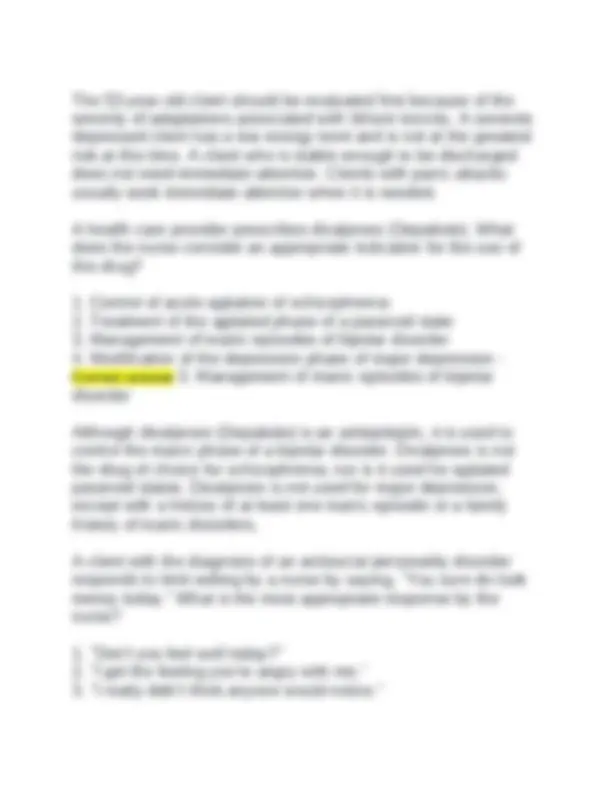
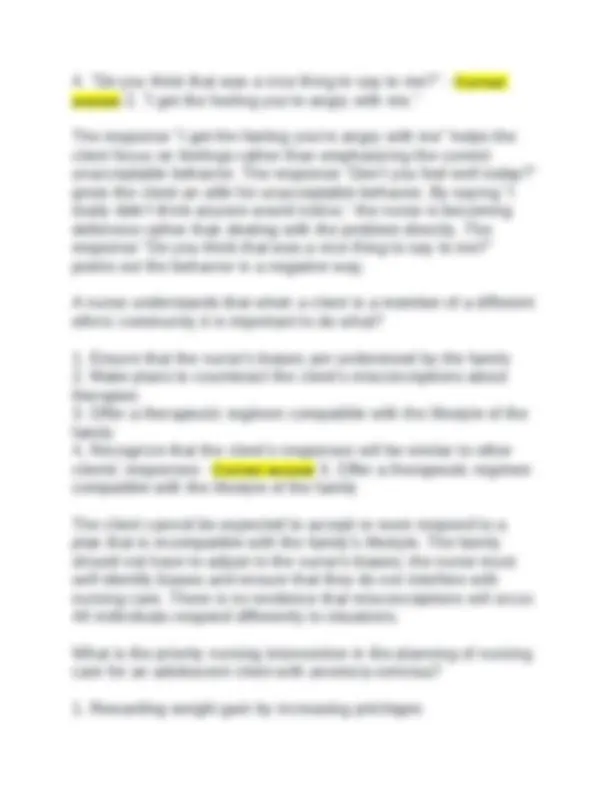

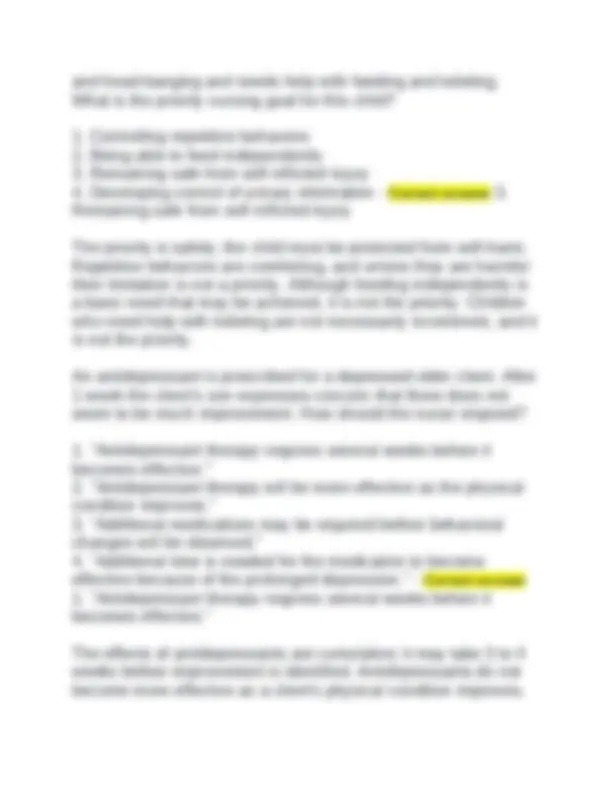
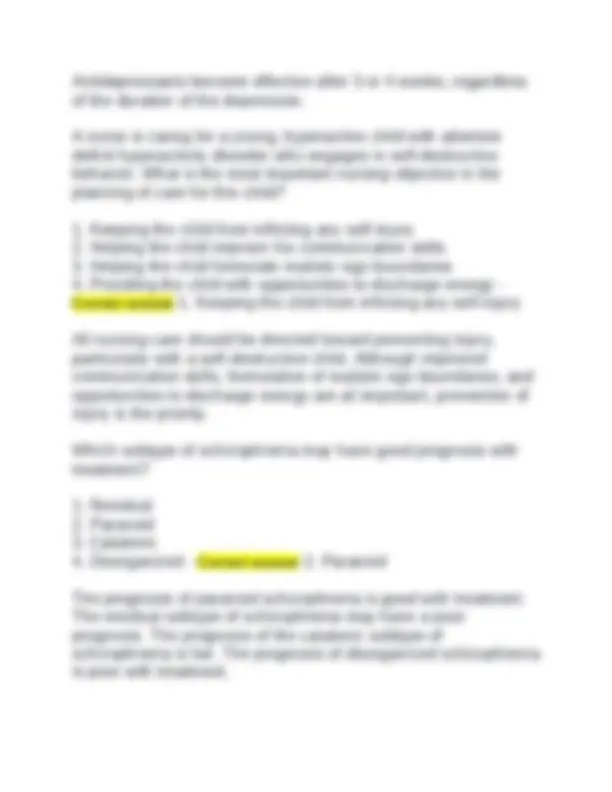
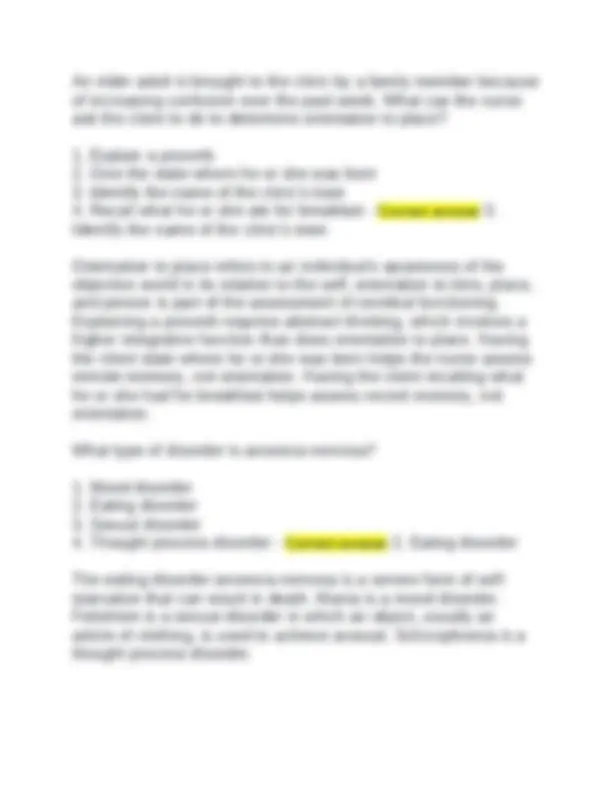
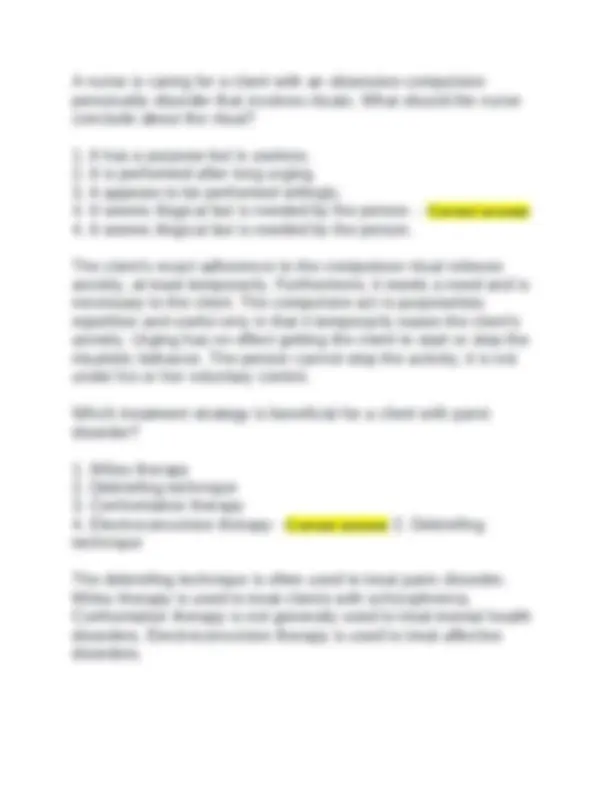
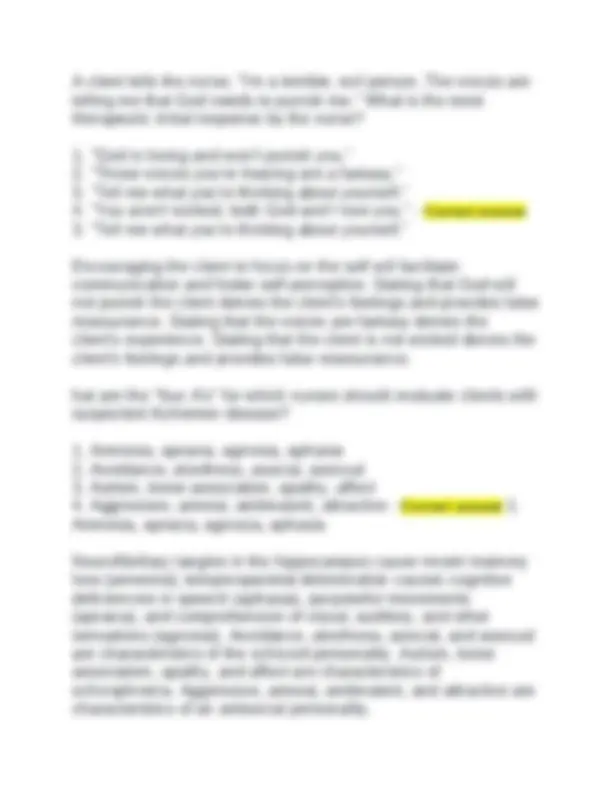
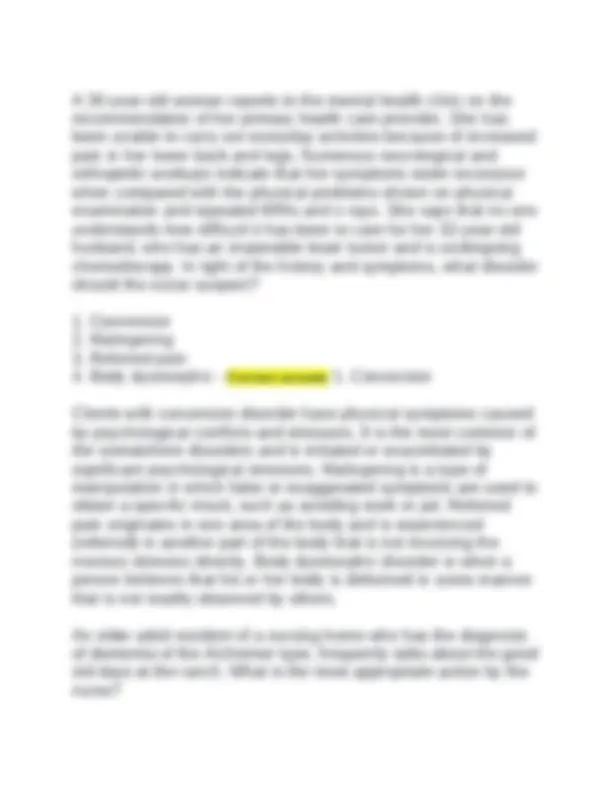
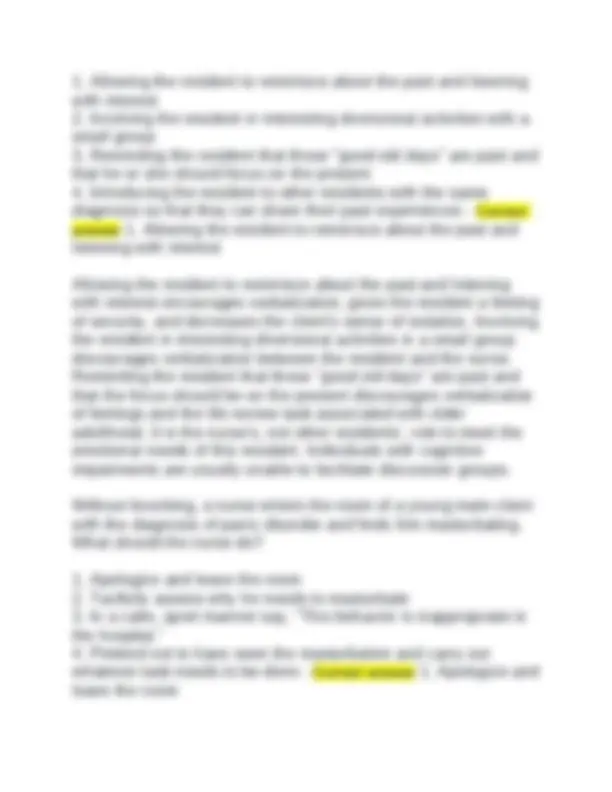
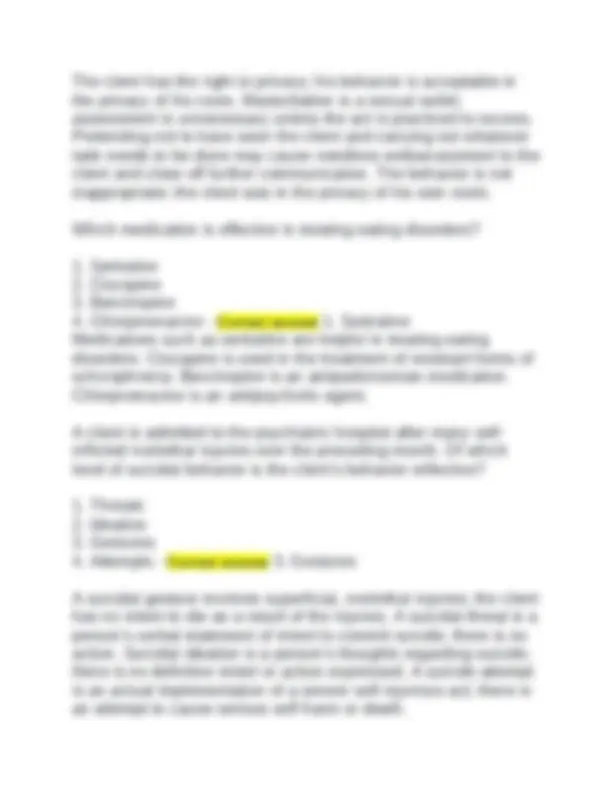
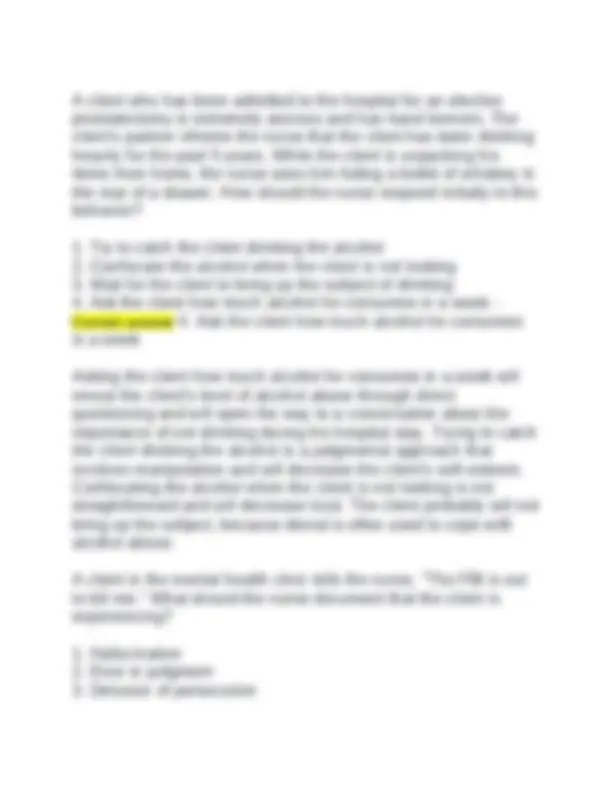
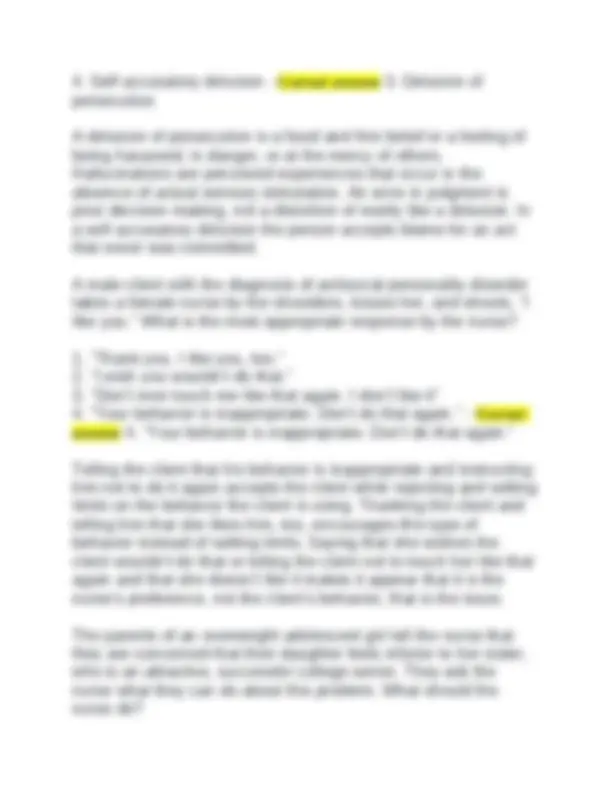
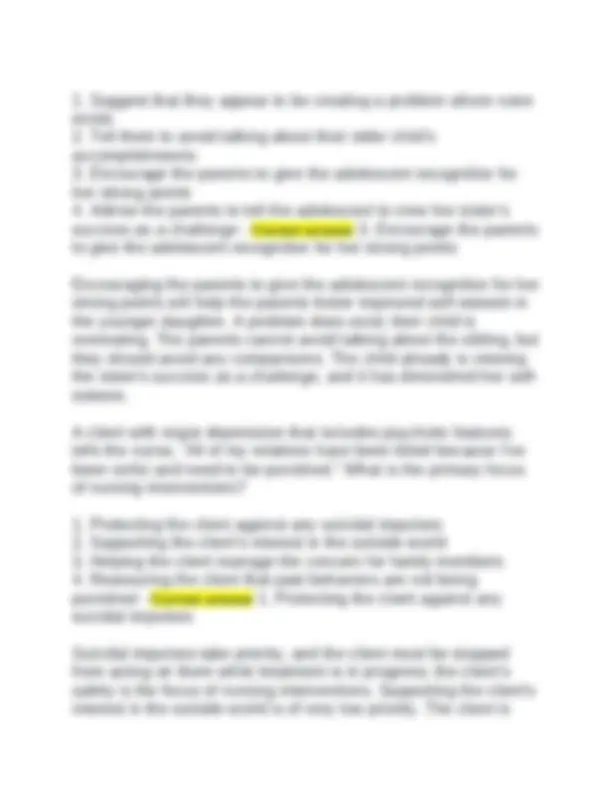
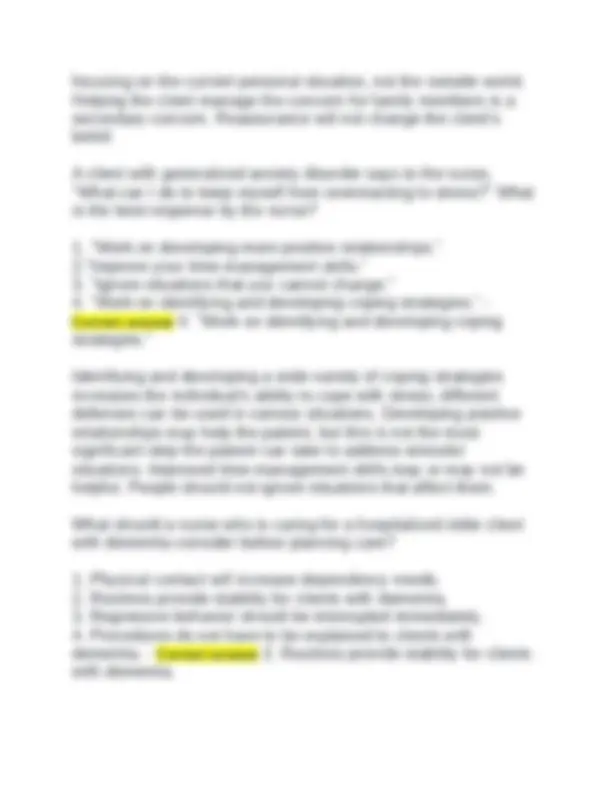
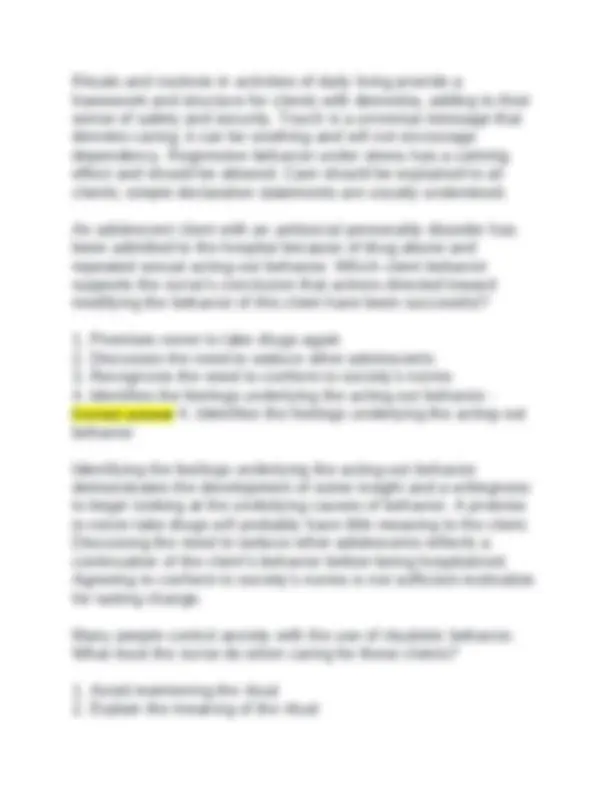
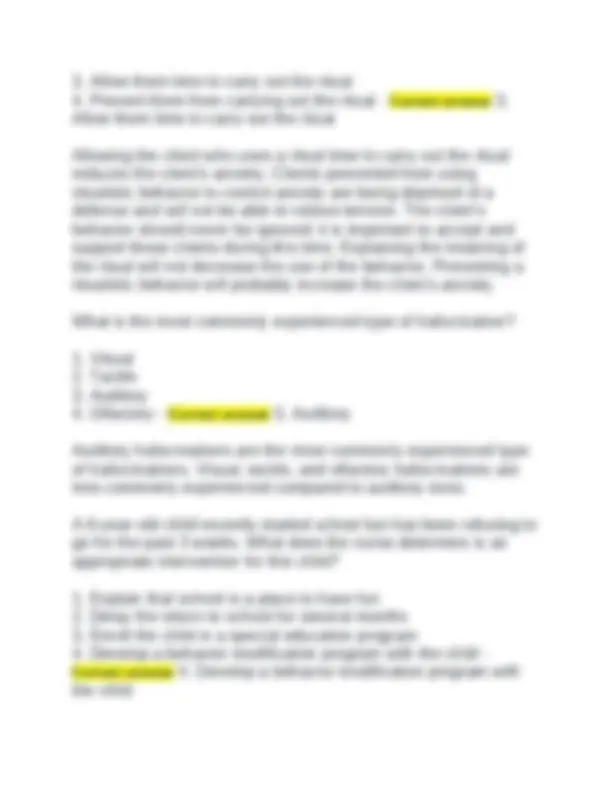
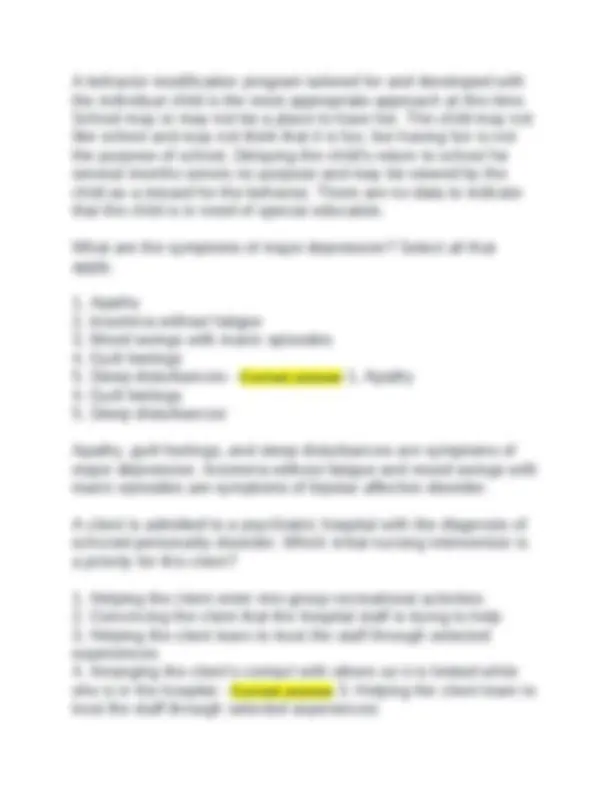
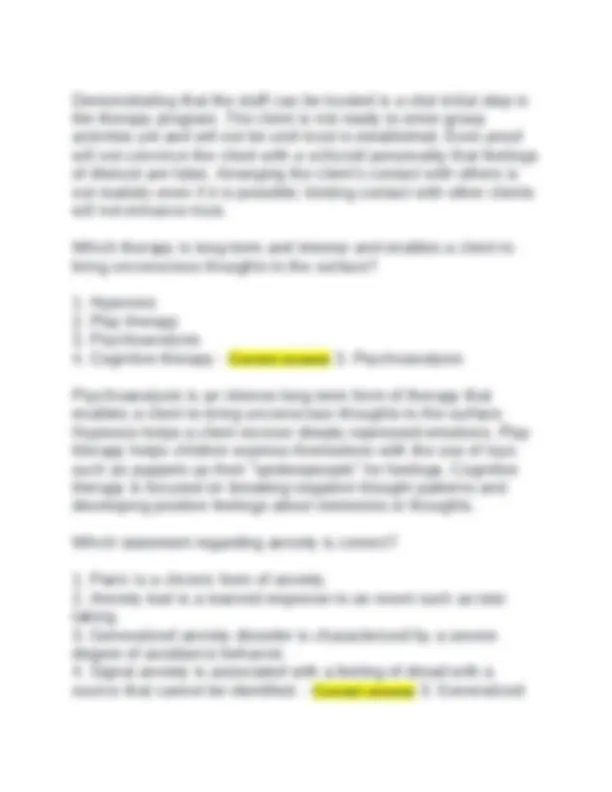
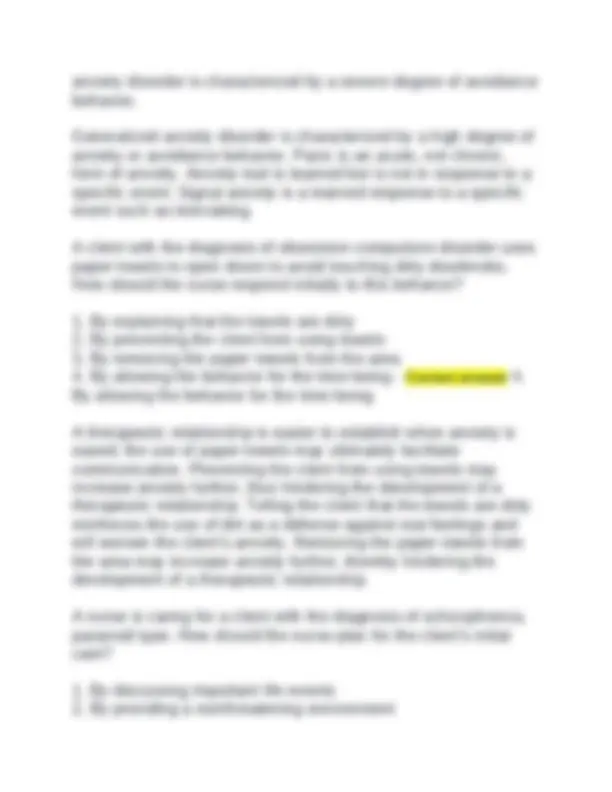
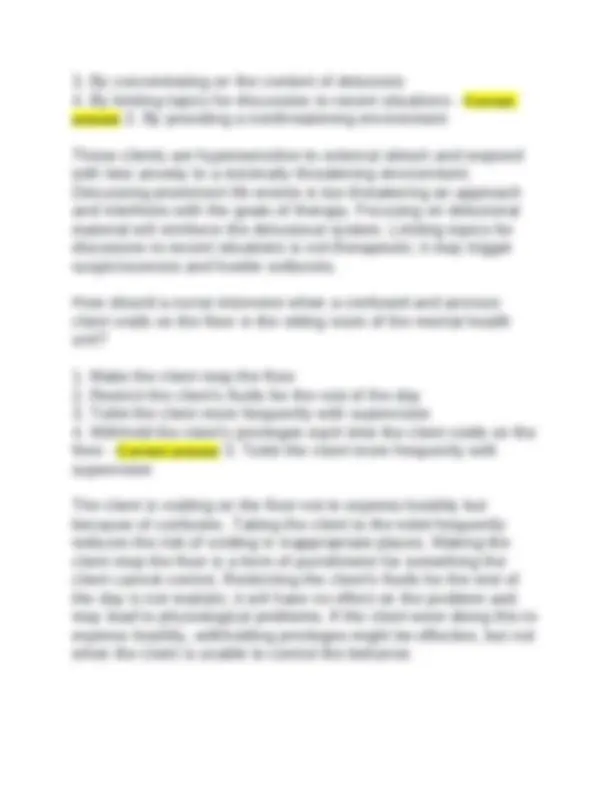
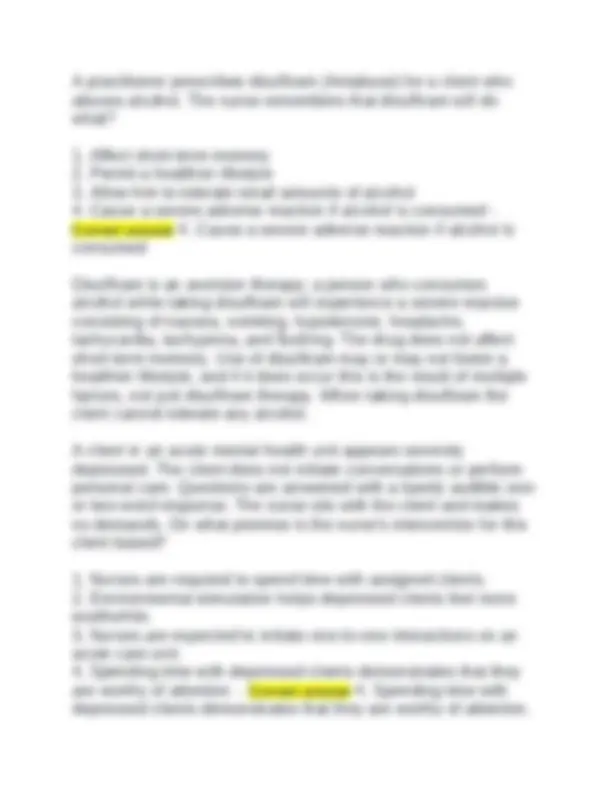

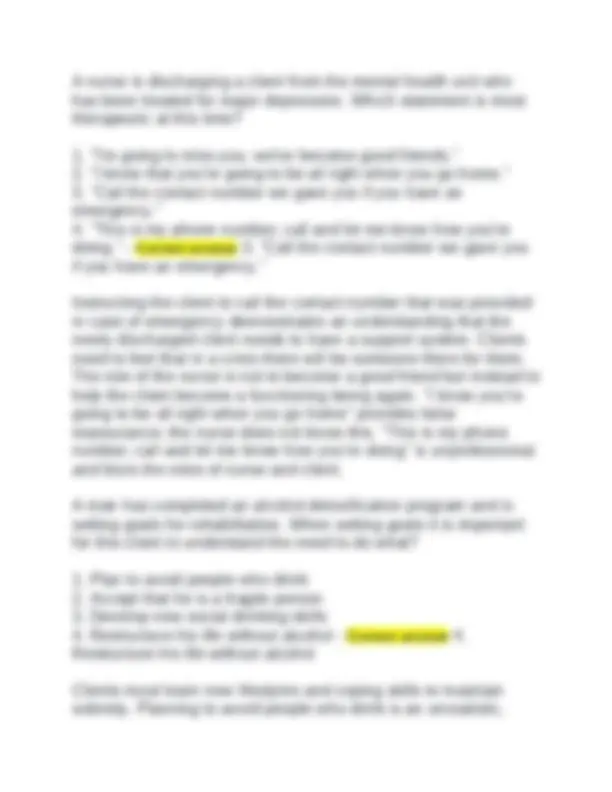
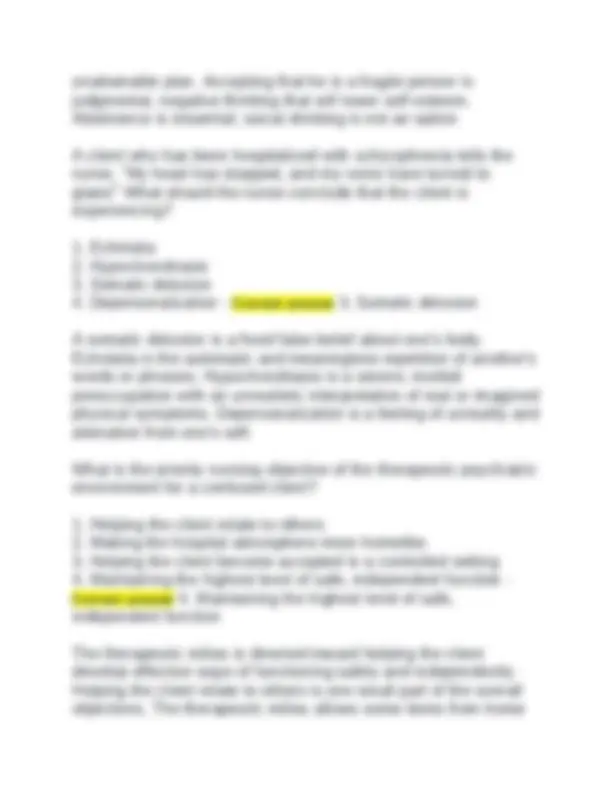
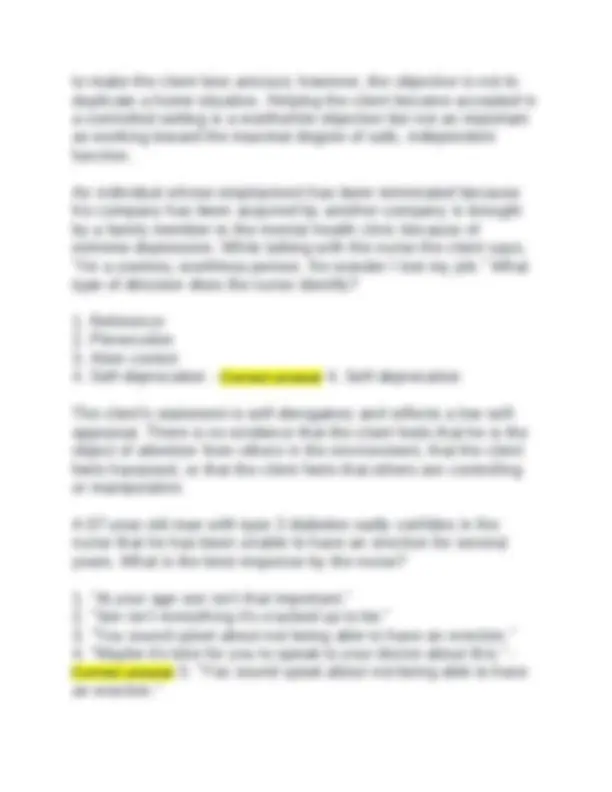
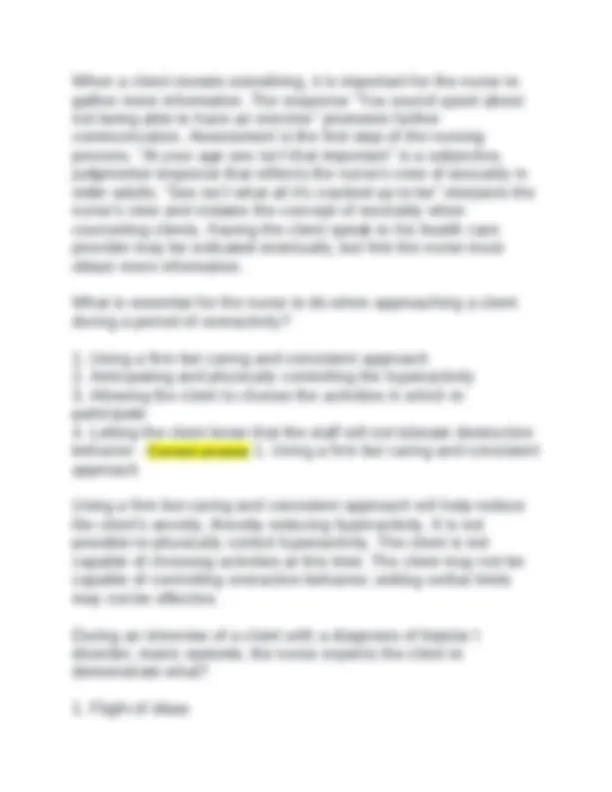
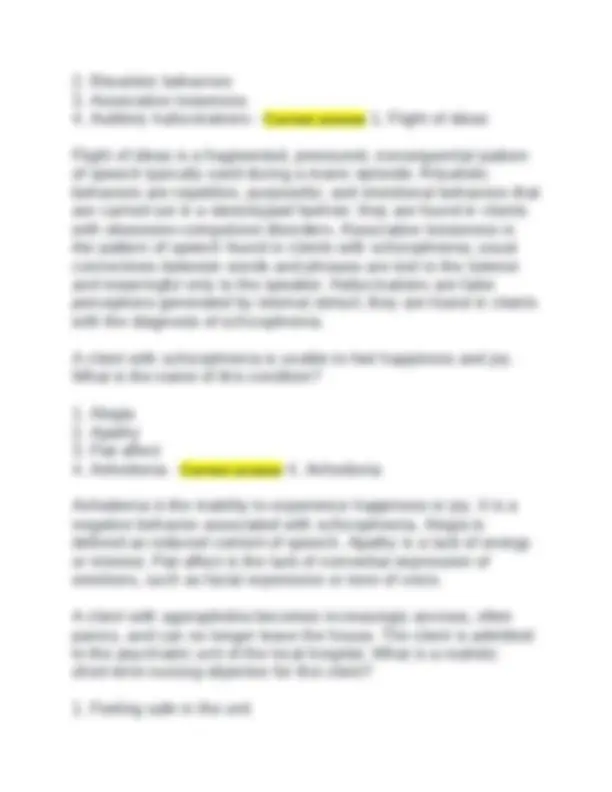
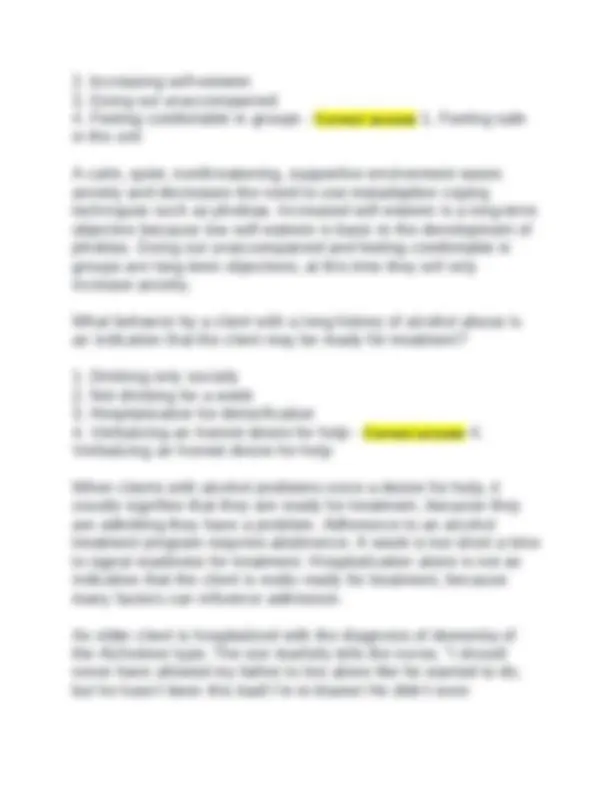
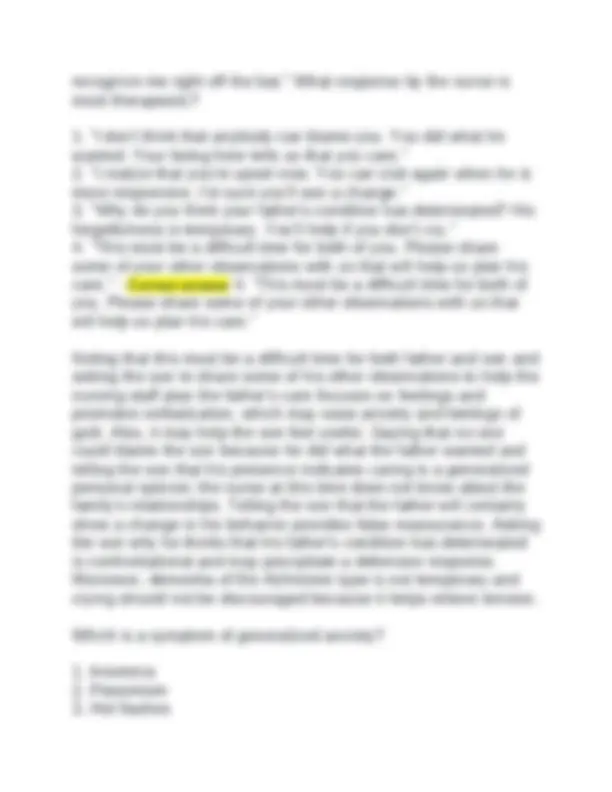
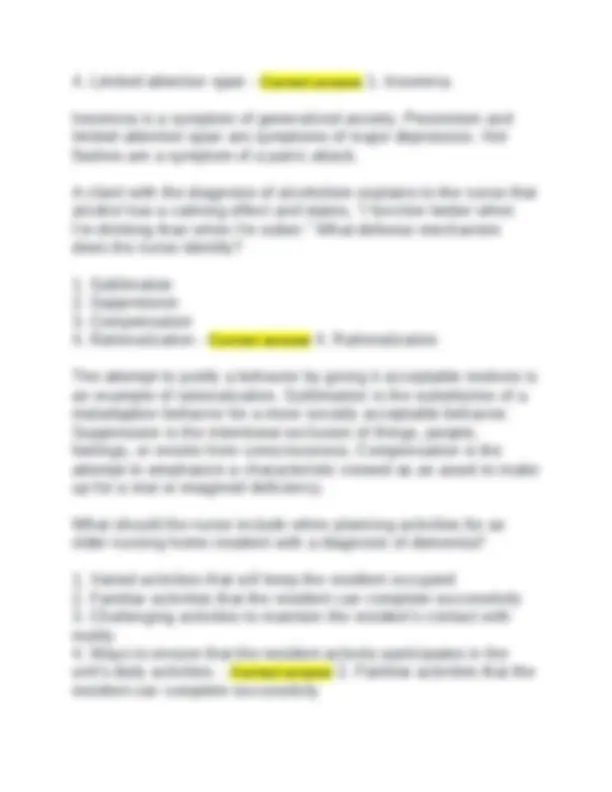
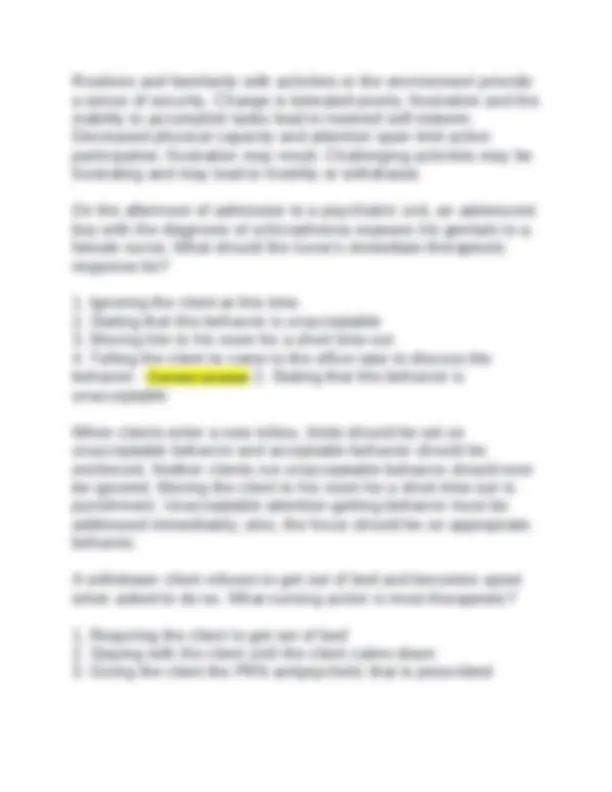
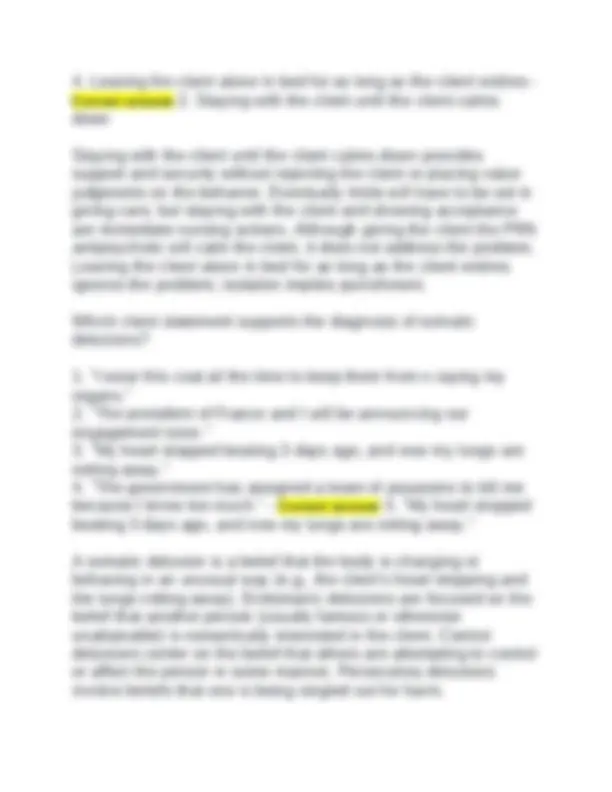
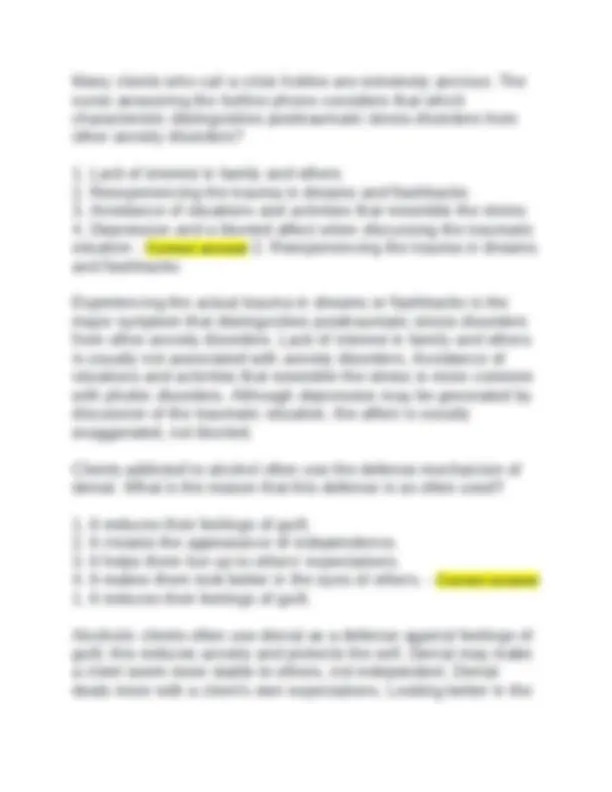
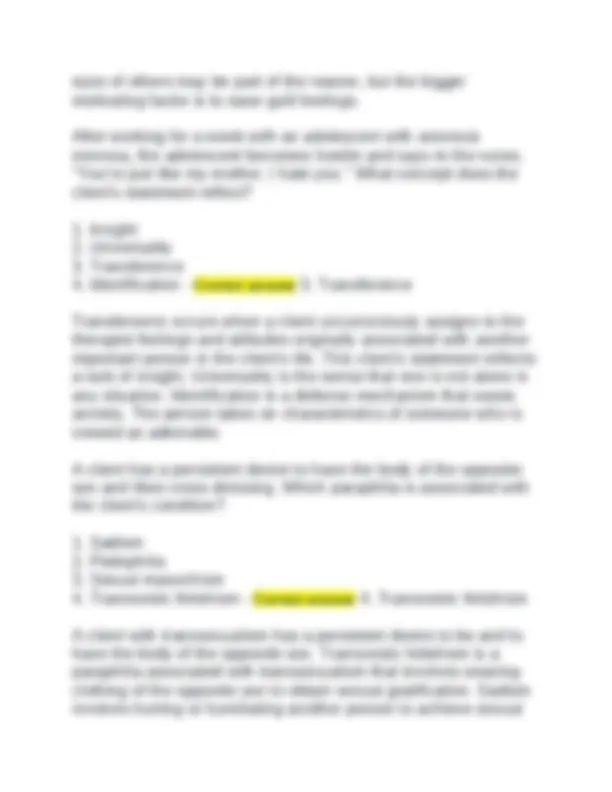
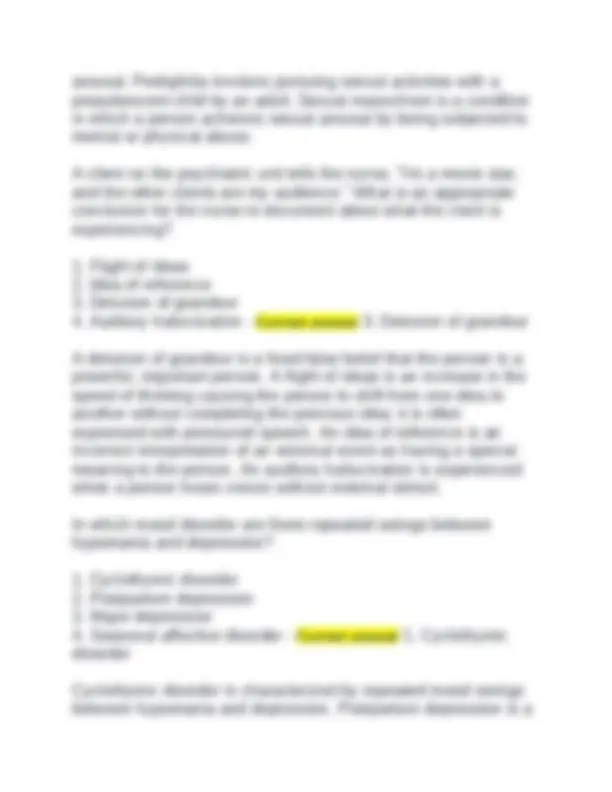
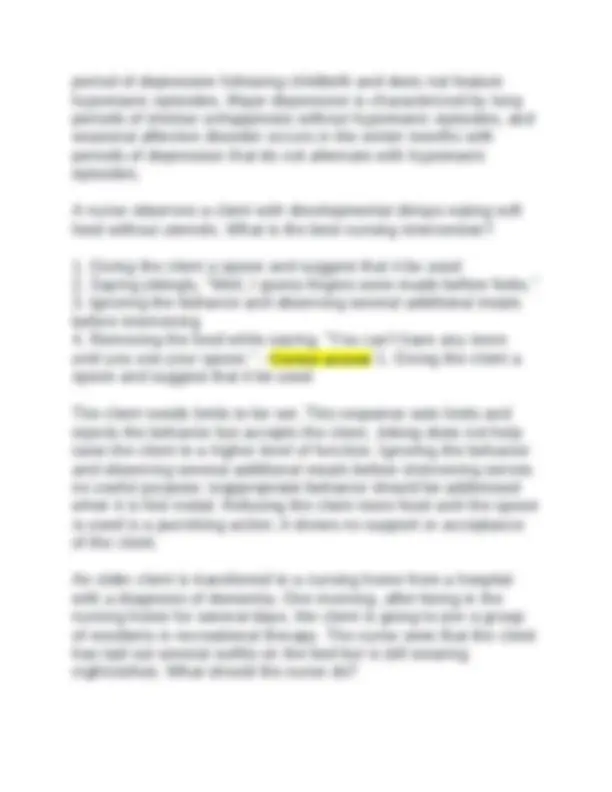
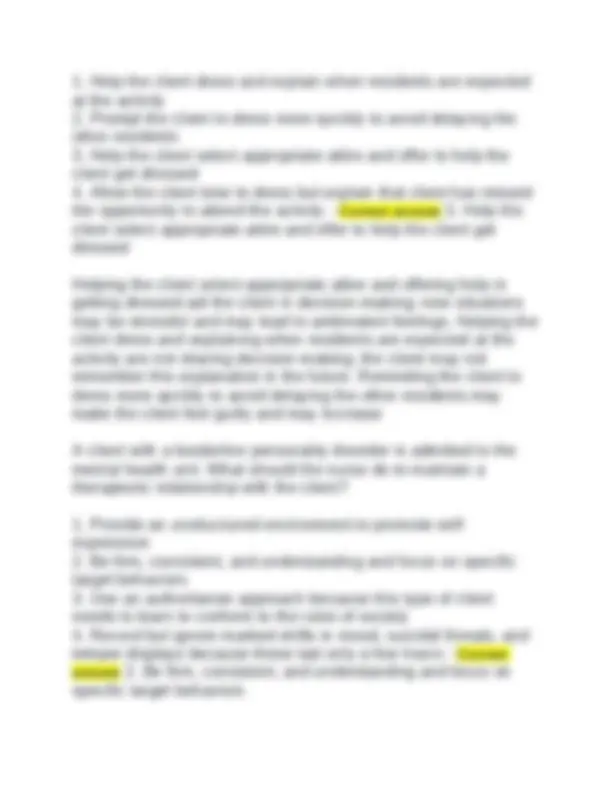
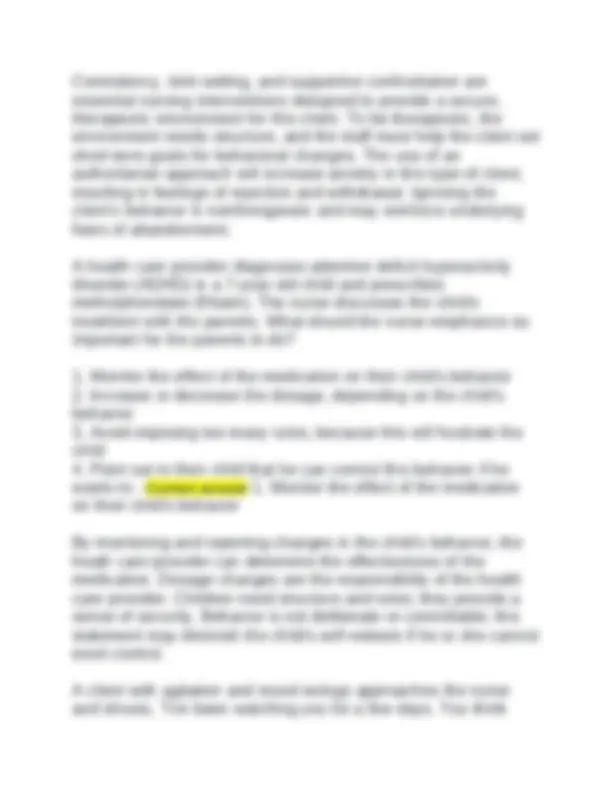
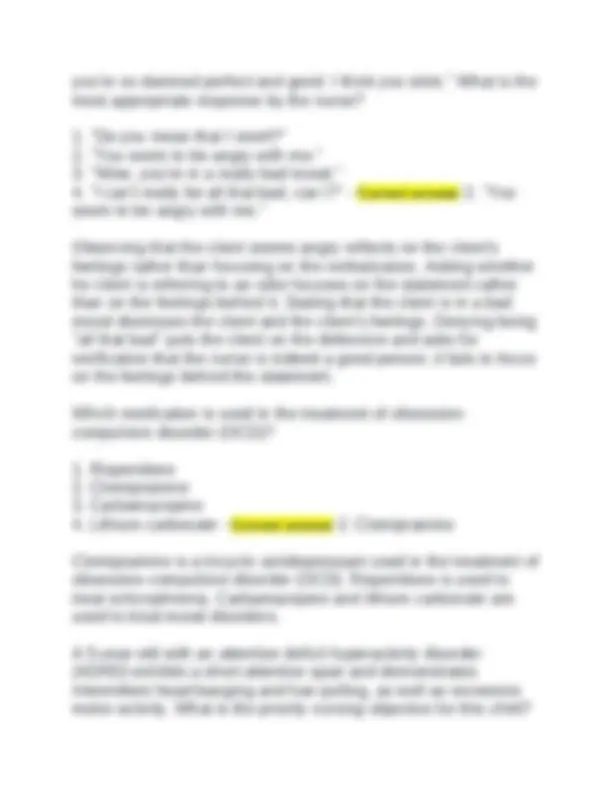
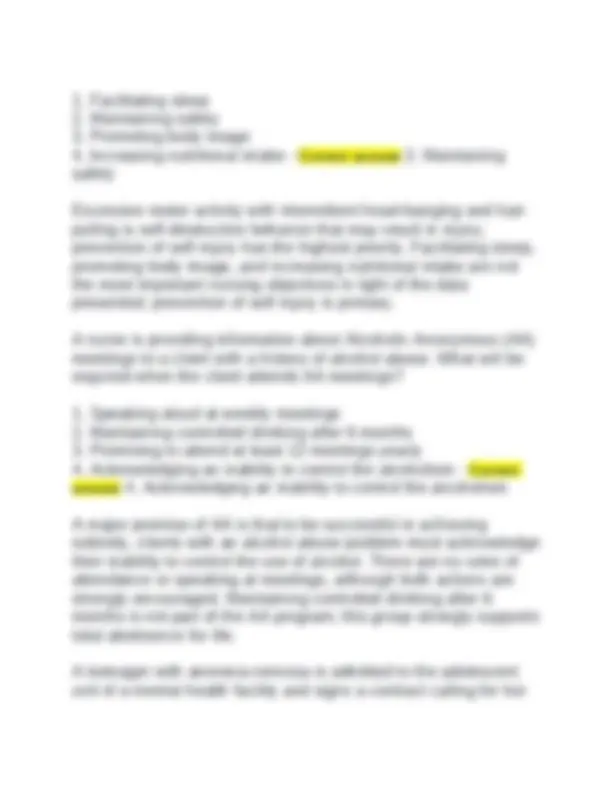
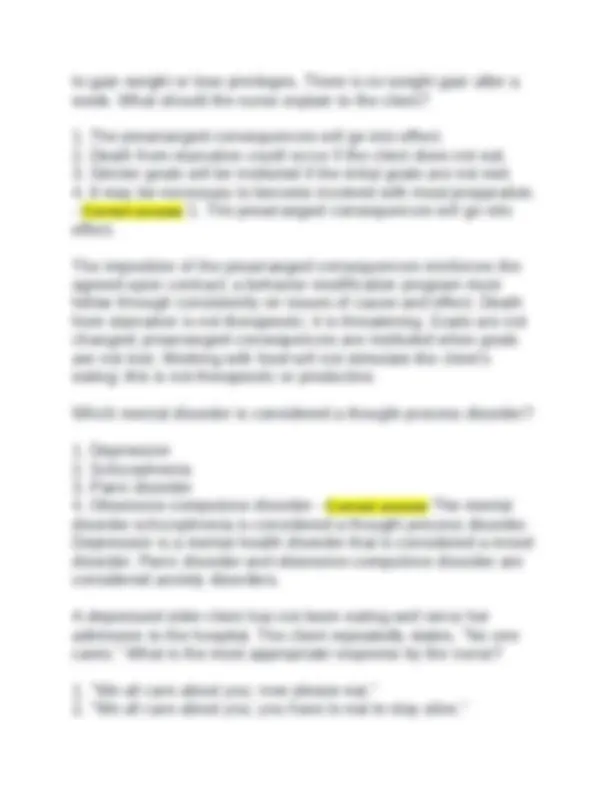
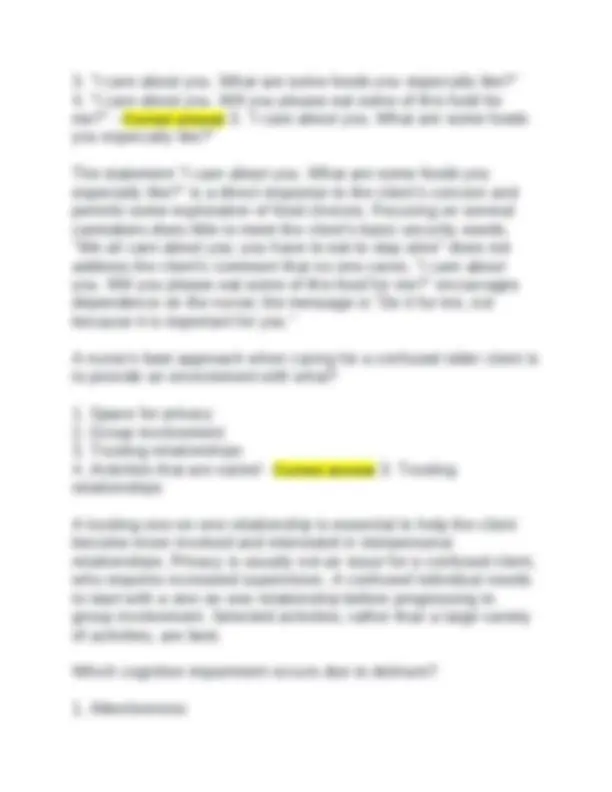
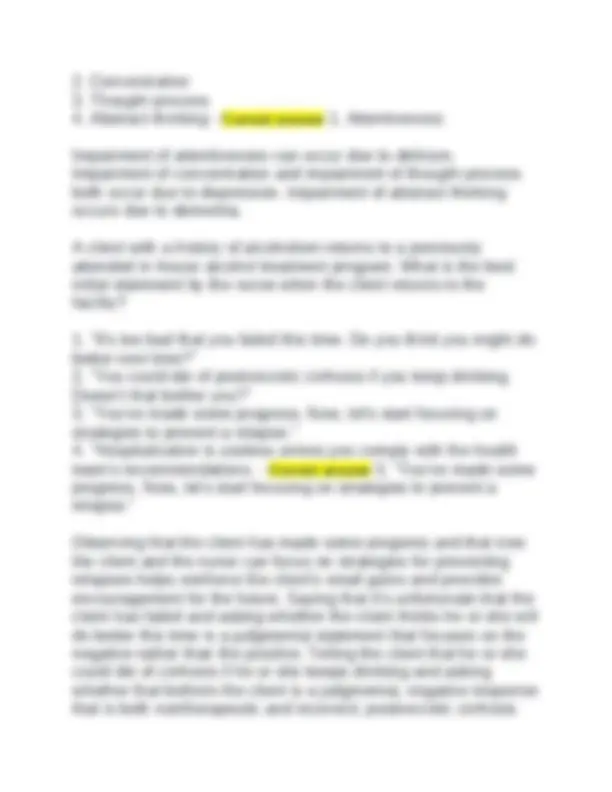
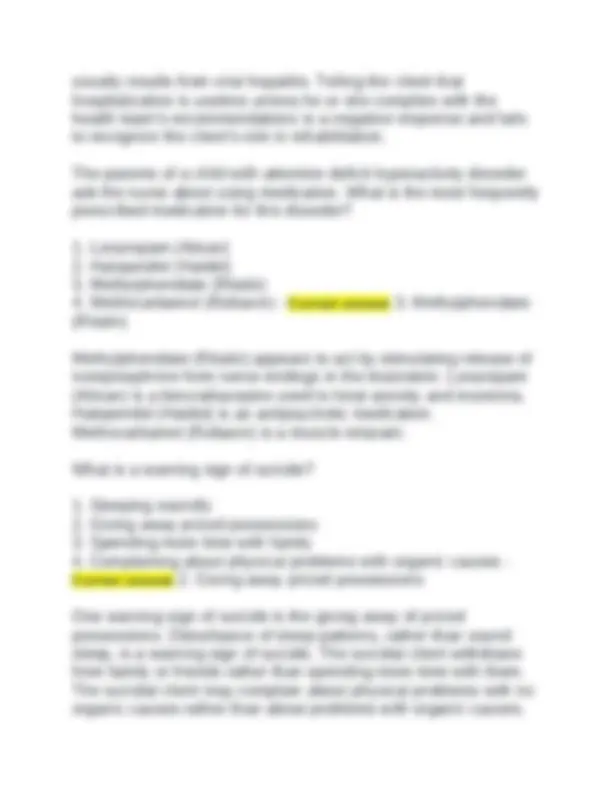
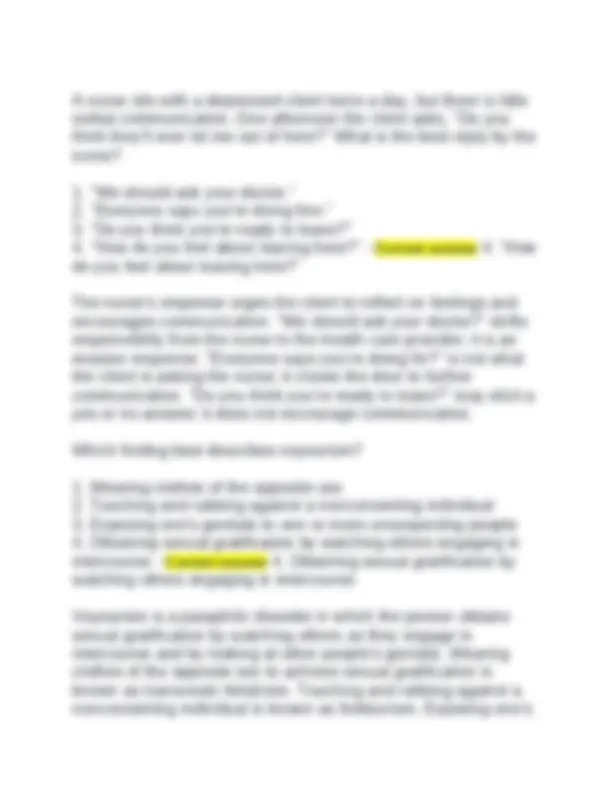
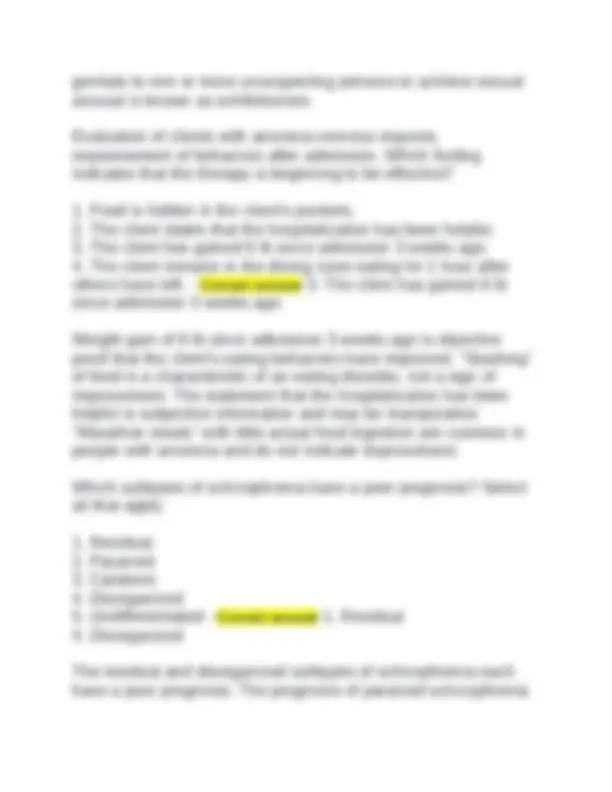
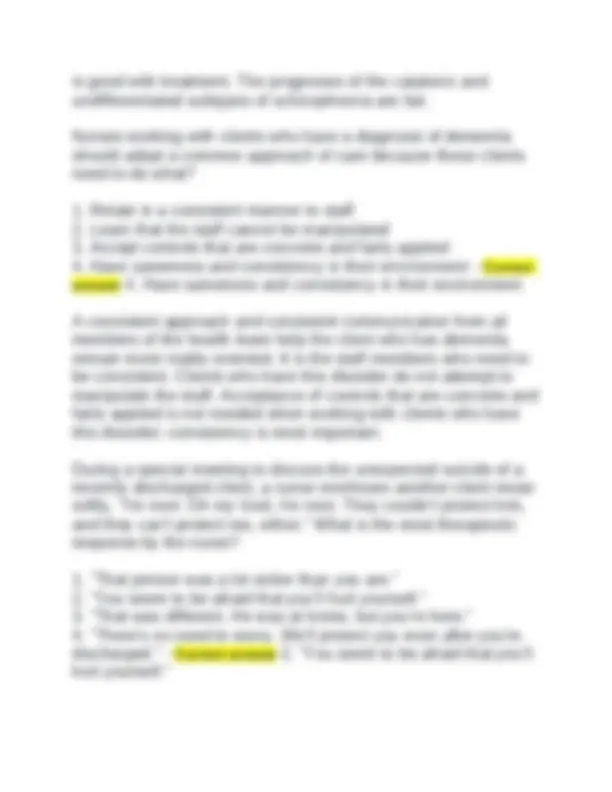
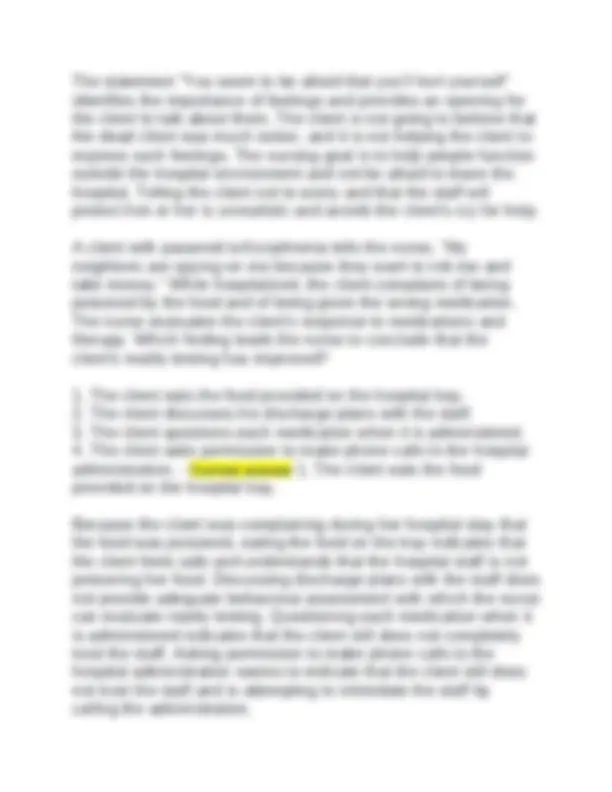
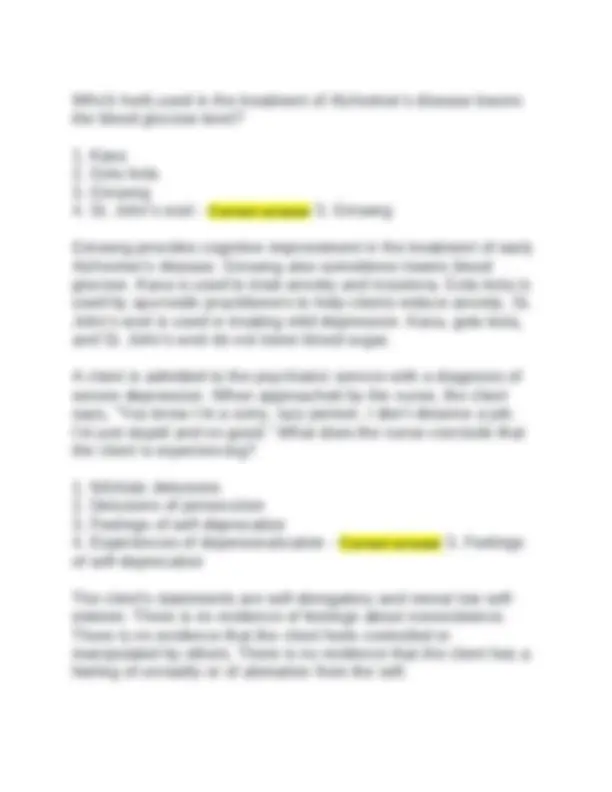
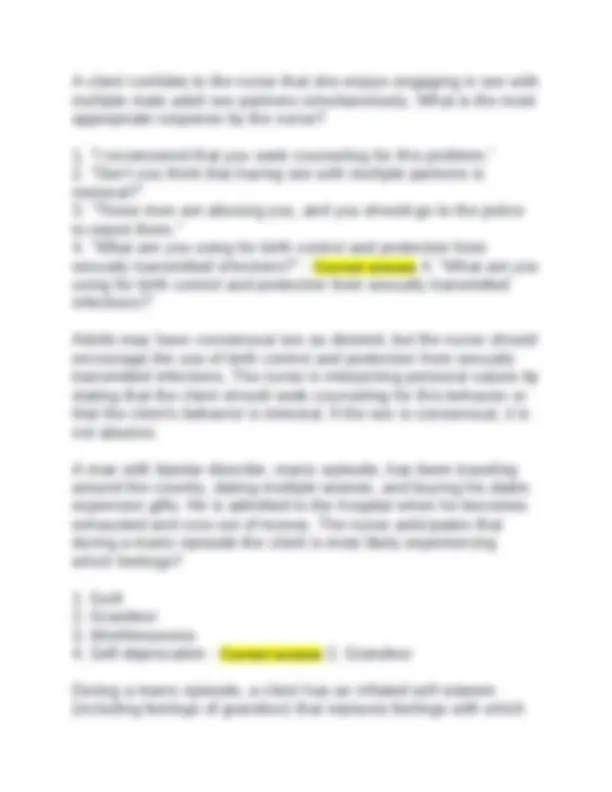
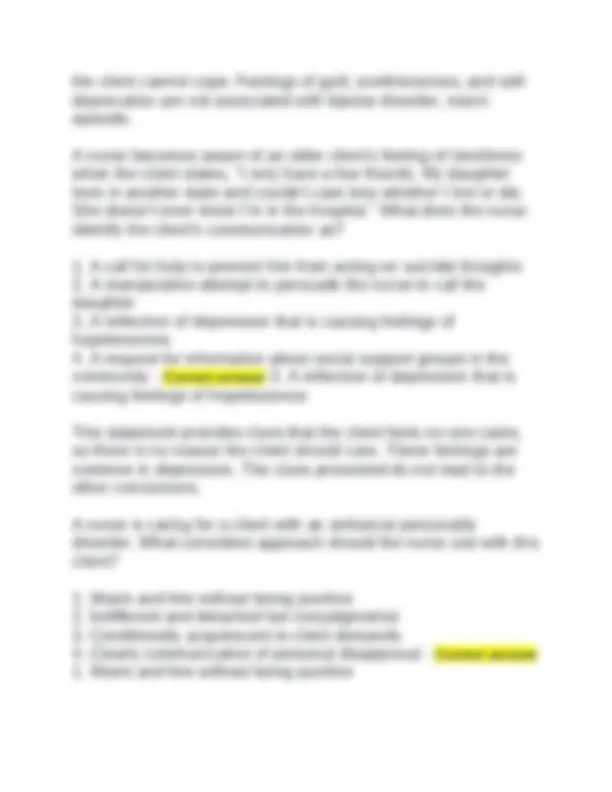
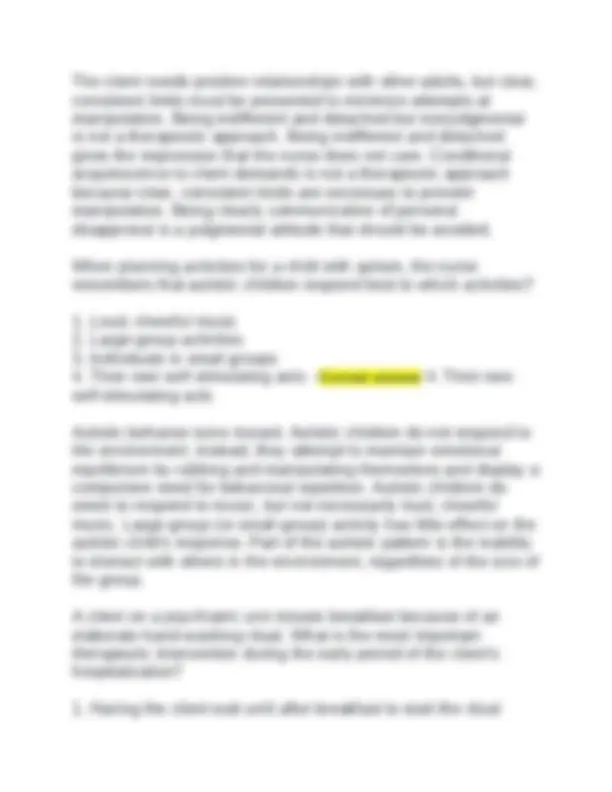
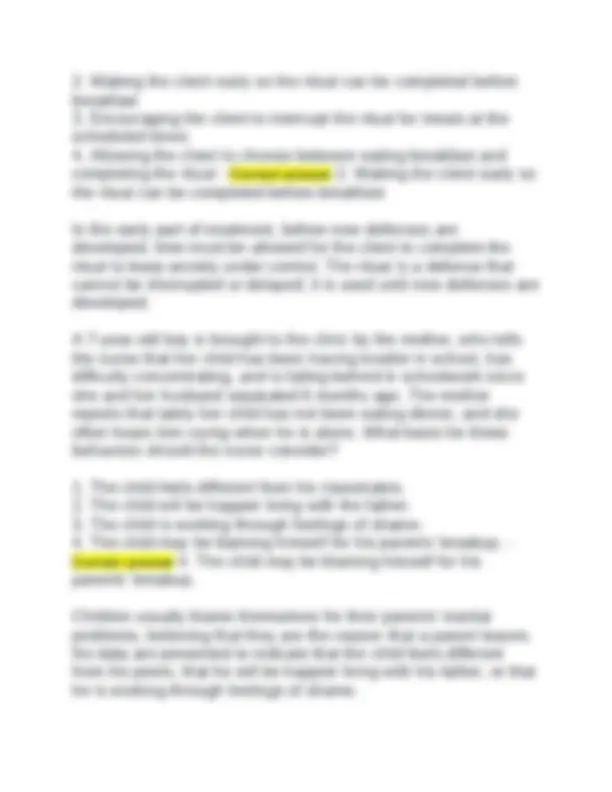
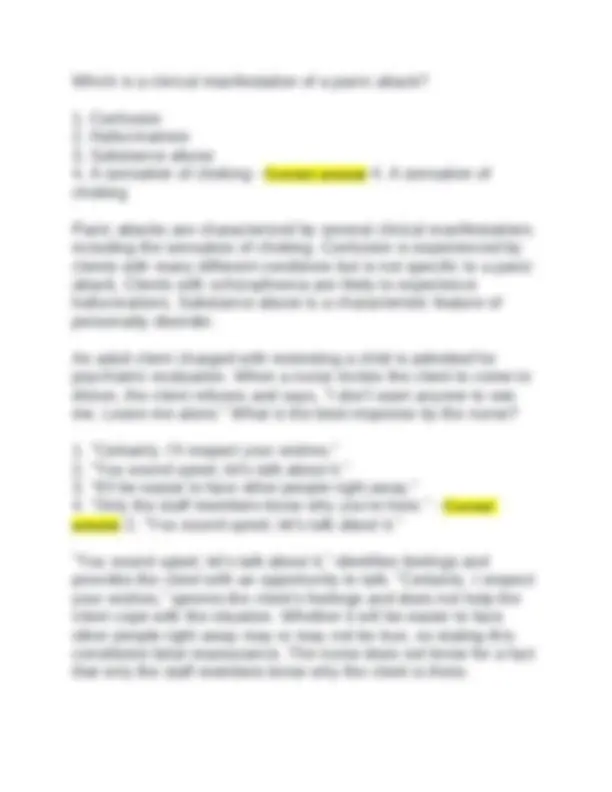
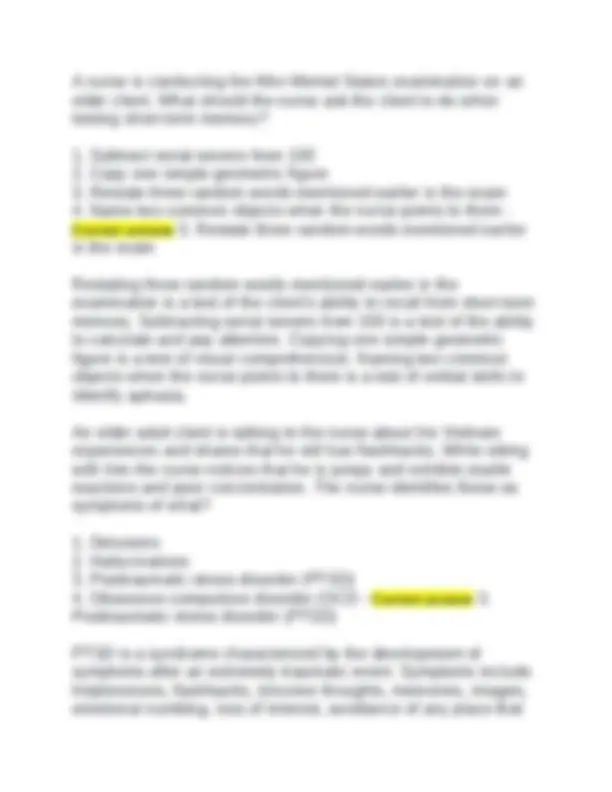
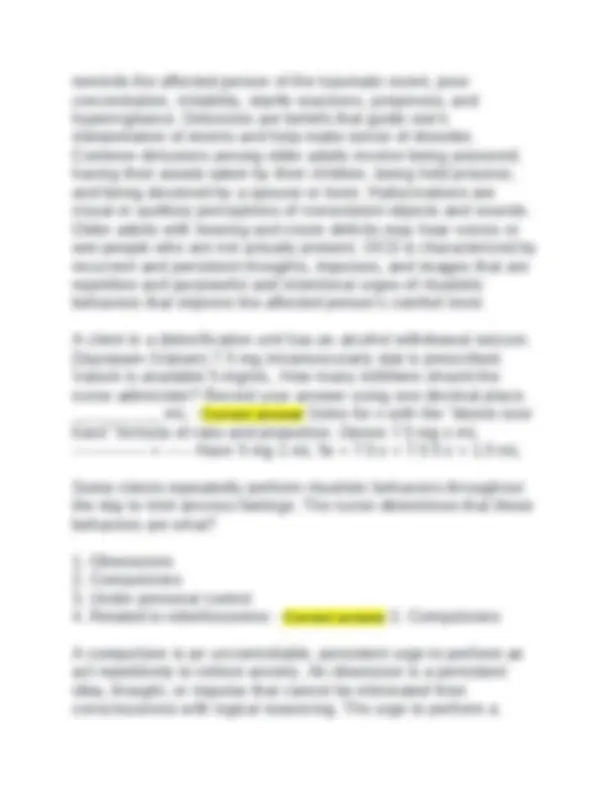
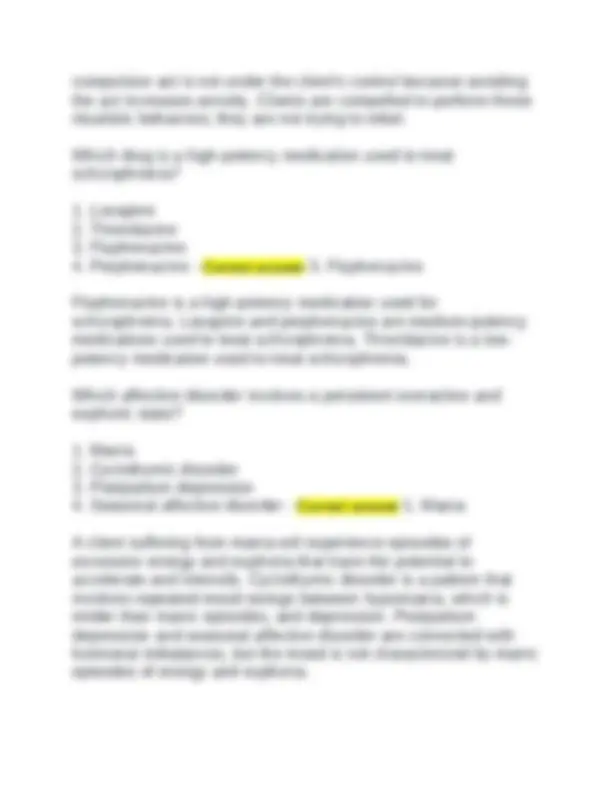
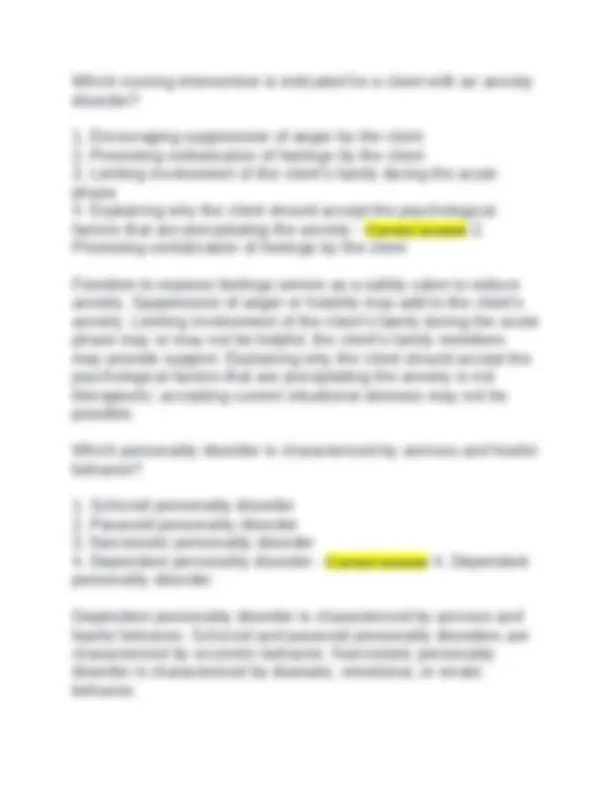
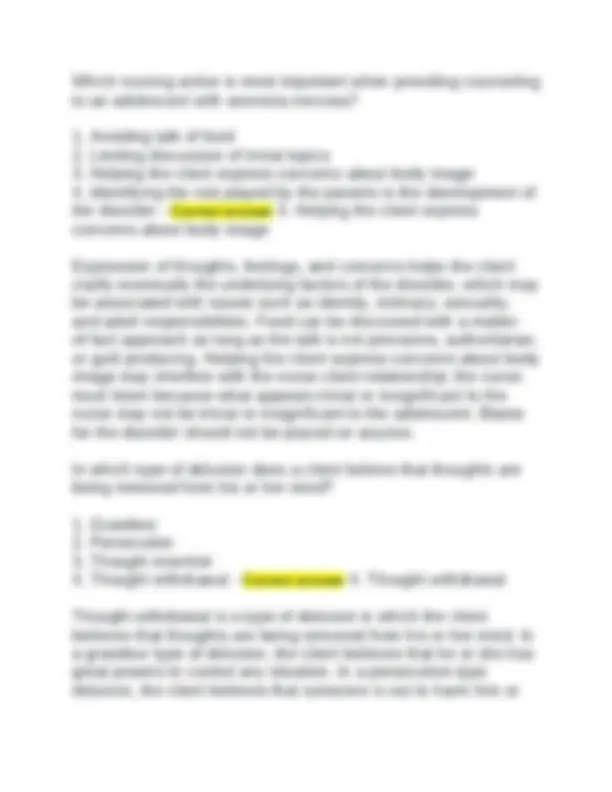
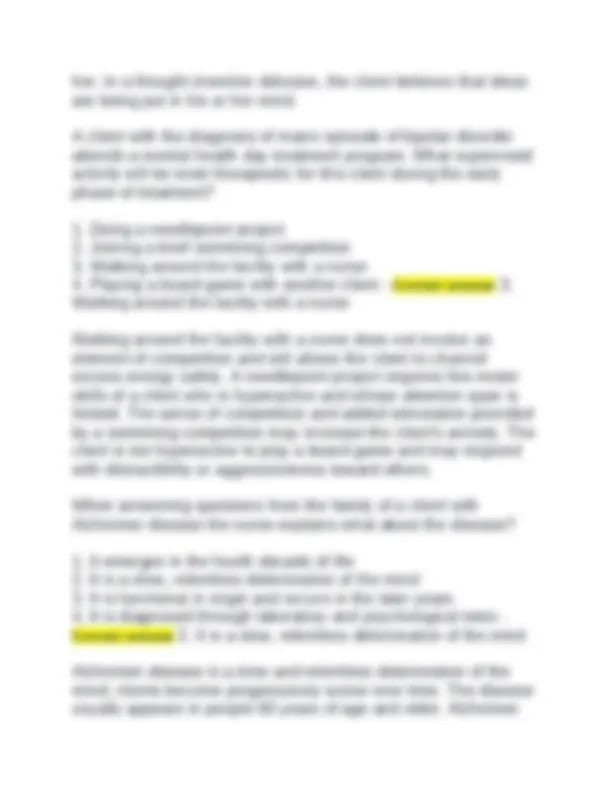
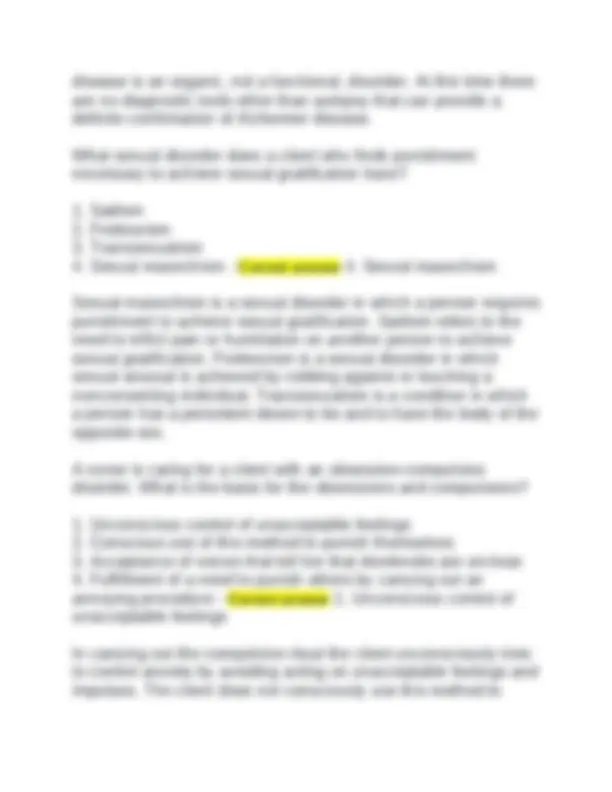
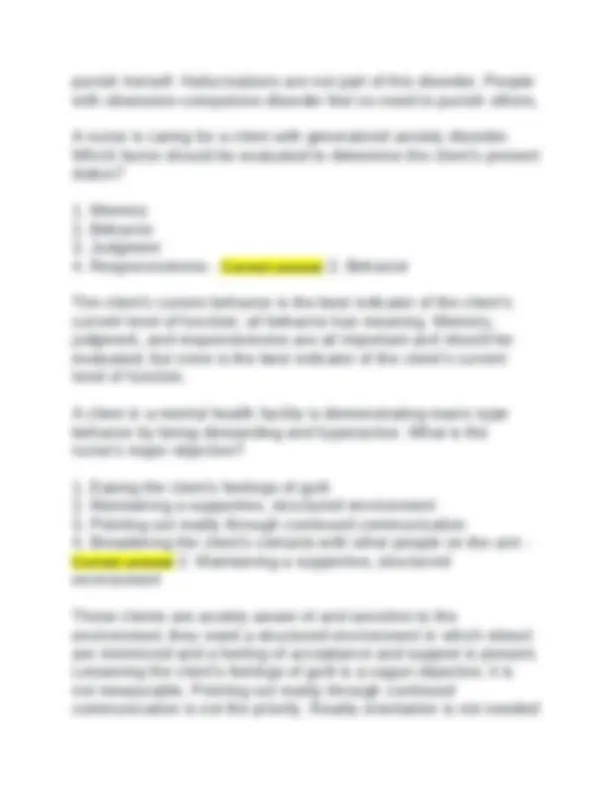
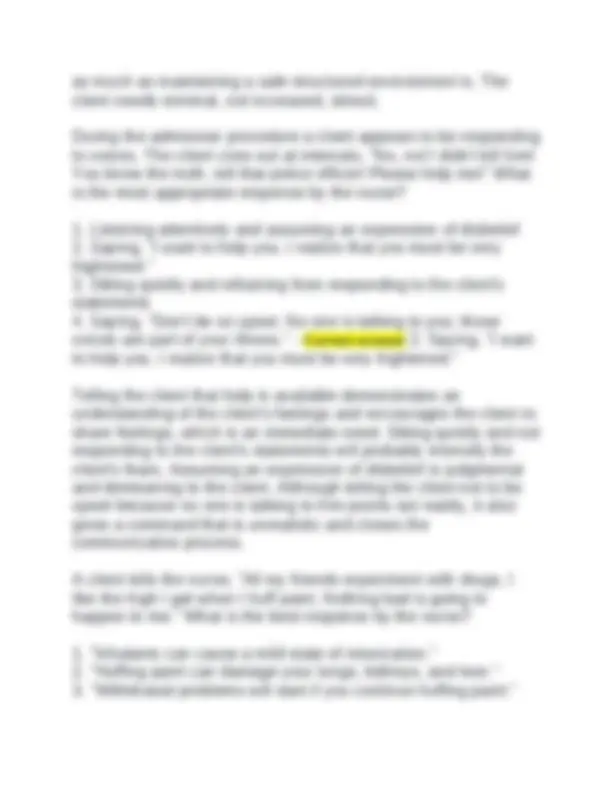


Study with the several resources on Docsity

Earn points by helping other students or get them with a premium plan


Prepare for your exams
Study with the several resources on Docsity

Earn points to download
Earn points by helping other students or get them with a premium plan
Community
Ask the community for help and clear up your study doubts
Discover the best universities in your country according to Docsity users
Free resources
Download our free guides on studying techniques, anxiety management strategies, and thesis advice from Docsity tutors
HESI and SAUNDERS NCLEX-PN COMPREHENSIVE Mental Health Exam Prep Questions & Knowledge Review HESI and SAUNDERS NCLEX-PN COMPREHENSIVE Mental Health Exam Prep Questions & Knowledge Review
Typology: Exams
1 / 160

This page cannot be seen from the preview
Don't miss anything!





























































































A married male client with three children has lost his job and states that he feels useless. He is tearful, upset, and embarrassed. What is an appropriate objective of care for this client?
losses such as those occurring during major disasters. Maturational crises occur in response to stress experienced as one struggles with developmental tasks. Developmental (maturational) crises are associated with developmental tasks; divorce is not a developmental task. A resident in a nursing home recently immigrated to the United States from Italy. How does the nurse plan to provide emotional support?
A nurse is planning to teach a client about self-care. What level of anxiety will best enhance the client's learning abilities?
The nurse observes biting, rocking, sucking, and lags in intellectual development in a child. She also concludes the child is suffering from sleep disorders. What could be the reason for the child's condition?
A depressed client has been receiving venlafaxine (Effexor) 25 mg three times a day by mouth. The health care provider increases the dose to 37.5 mg three times a day by mouth. The pharmacy supplies scored 25-mg tablets of Effexor. How many tablets should the nurse administer? Record your answer using one decimal place. _________ tablets - Correct answer Solve the problem by using ratio and proportion. Desire 37.5 mg x tablets ------------------- = --------- Have 25 mg 1 tablet 25x = 37.5 x = 37. ÷ 25 x = 1.5 tablets. What is the nurse's specific responsibility when the rights of a client on a mental health unit are restricted by the use of seclusion?
A client with newly diagnosed multiple myeloma asks, "How long do you think I have to live?" What is the most appropriate response by the nurse?
A nurse counseling a female client on the inpatient psychiatric unit responds to a statement made by the woman by stating, "I'm confused about exactly what is upsetting you. Would you go over that again, please?" What is the nurse using?
Saying, "I'll be back in 15 minutes, and then we can talk" allows the agitated, angry client time to regain self-control; telling the client that the nurse will return will decrease possible guilt feelings and implies to the client that the nurse cares enough to come back. Getting assistance and giving the medication by way of injection does not respect the client's feelings; it may decrease trust and increase feelings of anger, helplessness, and hopelessness. An agitated, angry client will not be able to accept a logical explanation. Continued insistence may provoke increased anger and further loss of control. Which medication may be used to encourage abstinence in a client with alcoholism?